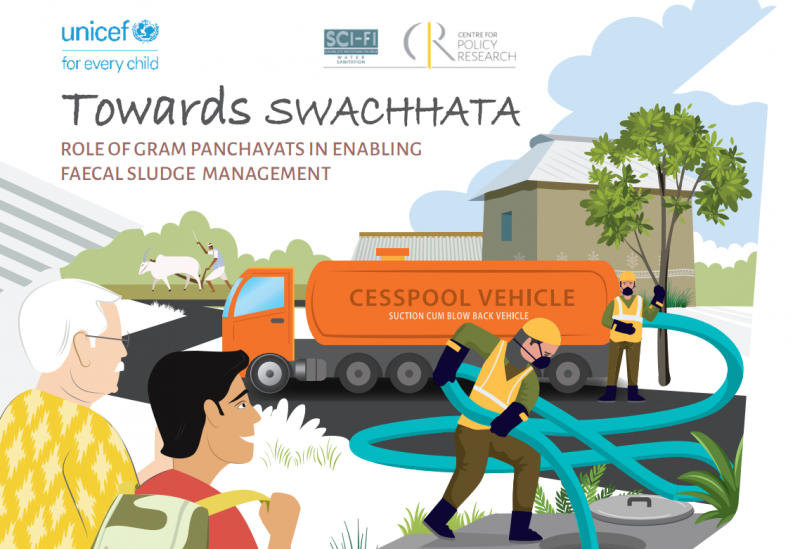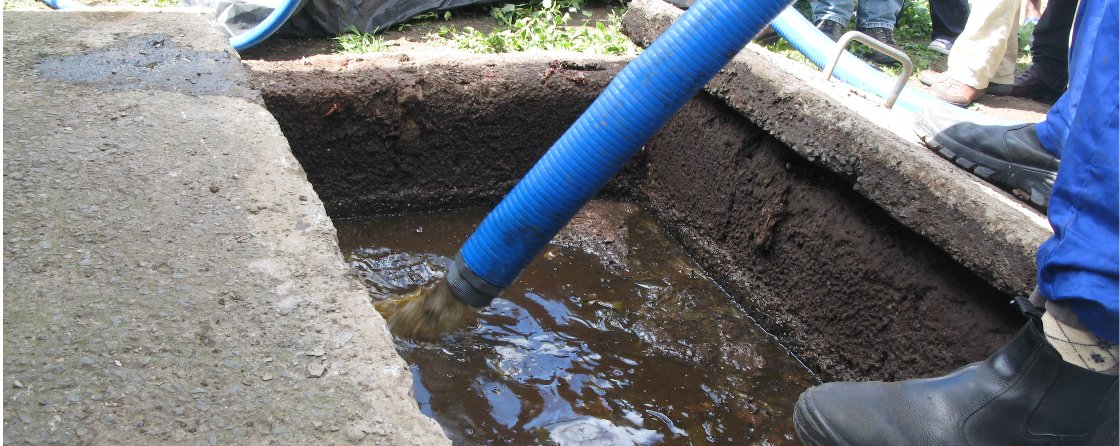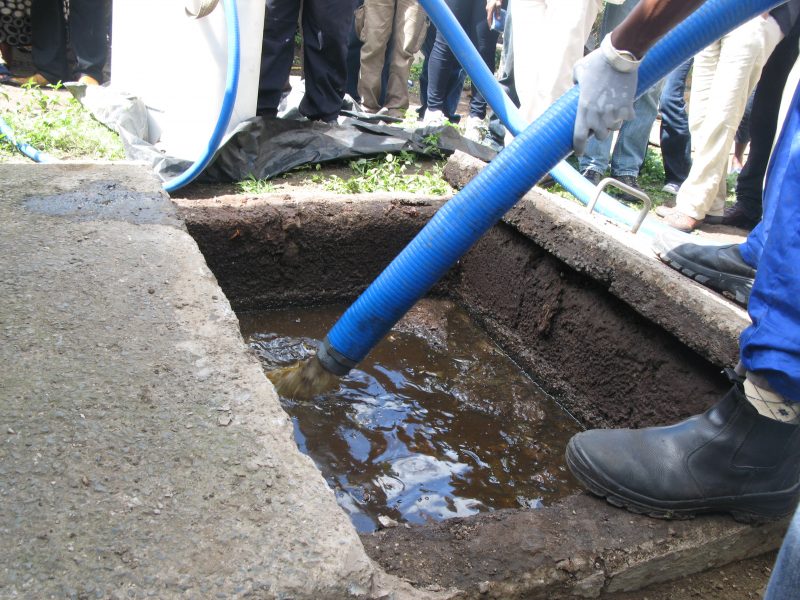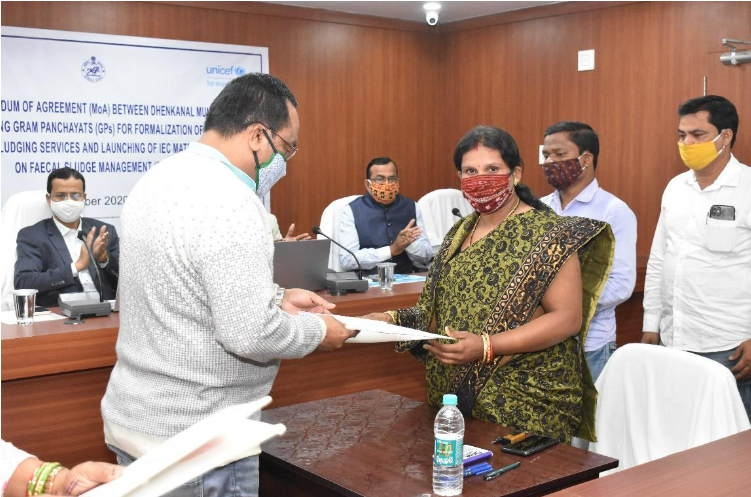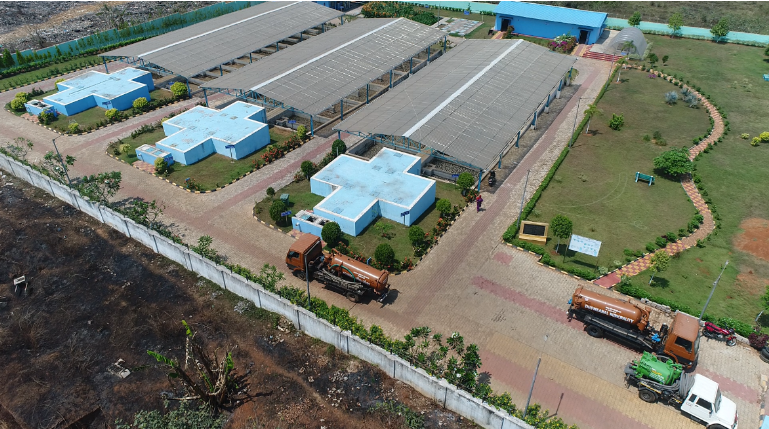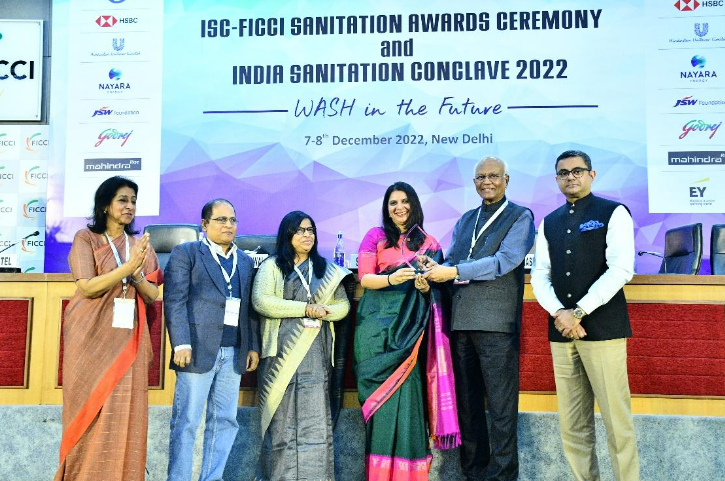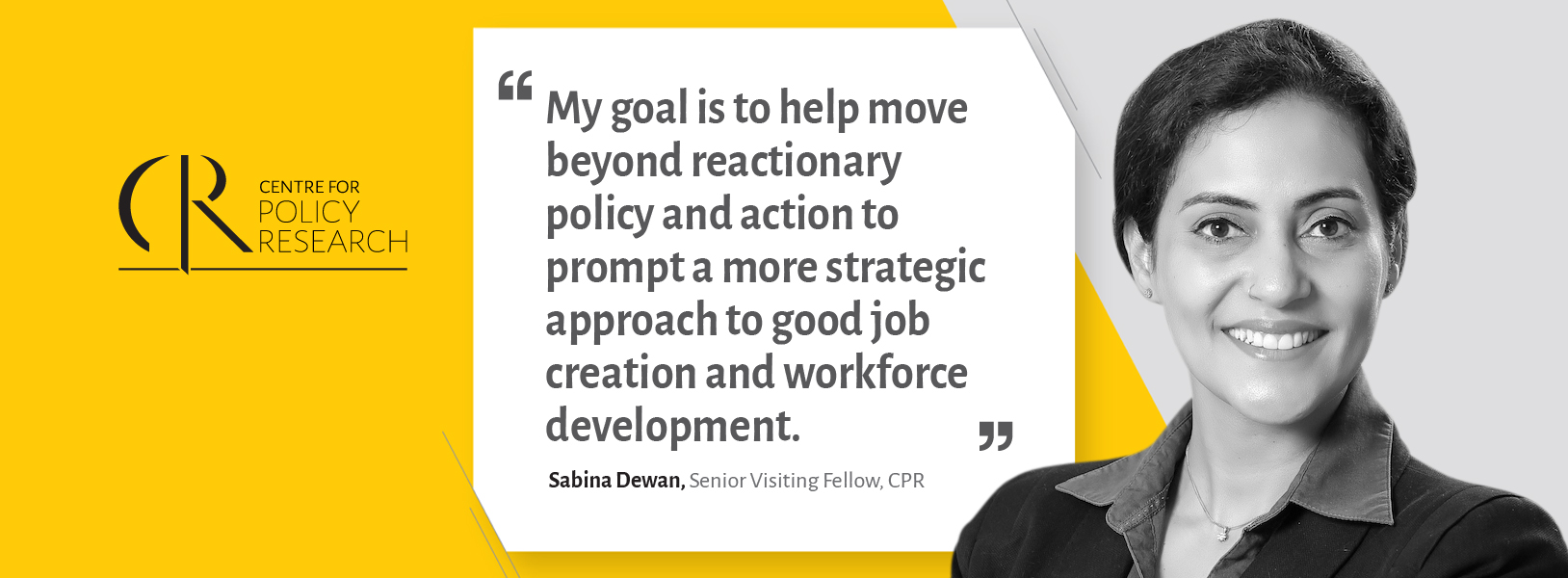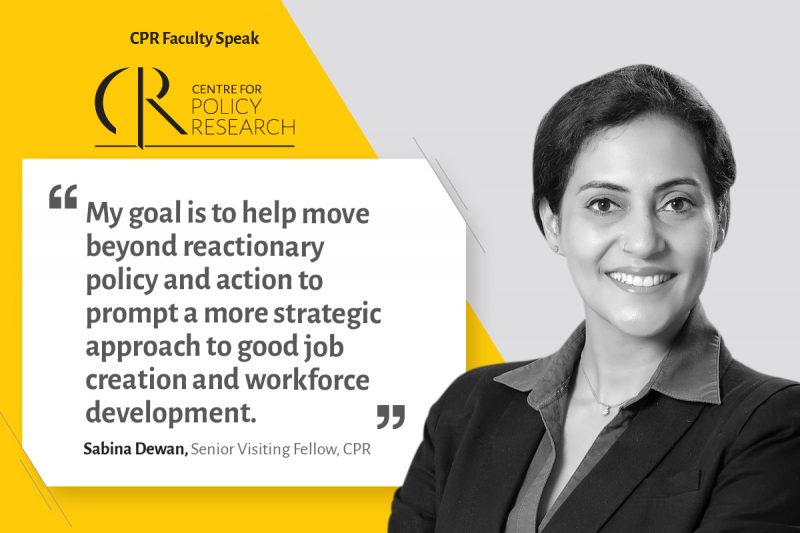
The following candidates are our mentors for Writing Urban India Fellowship anchored and funded by the Centre for Policy Research (CPR) and Urban Studies Foundation (USF) respectively:
Amita Bhide
 Dr. Amita Bhide is Chair Professor, National Jal Jeevan Mission, School of Habitat Studies, Tata Institute of Social Sciences. She works closely with issues related to urban poor communities, community organisation and housing rights movements, and advocacy groups. Professor Bhide’s recent work at the School of Habitat Studies concerns urban transformations and their link to inclusive and sustainable development. She has conducted extensive research in the fields of urban local governance and planning, water and sanitation, housing and land issues. She seeks to develop a theoretical and actionable model of urbanisation that is relevant for the global south through an engagement with several transformative groups at the city, provincial and national scales. Her recent publications include – ‘Colonising the Slum’, ‘ The regularising state’, ‘ Comparing Informalities’, ‘Directed Decentralisation- the experience of JNNURM in Maharashtra’. She has also co-edited a book co-edited along with Professor Himanshu Burte on ‘Parallax: Contemporary Urban Policy in India’. Apart from this, articles have been featured in multiple international and national journals of repute.
Dr. Amita Bhide is Chair Professor, National Jal Jeevan Mission, School of Habitat Studies, Tata Institute of Social Sciences. She works closely with issues related to urban poor communities, community organisation and housing rights movements, and advocacy groups. Professor Bhide’s recent work at the School of Habitat Studies concerns urban transformations and their link to inclusive and sustainable development. She has conducted extensive research in the fields of urban local governance and planning, water and sanitation, housing and land issues. She seeks to develop a theoretical and actionable model of urbanisation that is relevant for the global south through an engagement with several transformative groups at the city, provincial and national scales. Her recent publications include – ‘Colonising the Slum’, ‘ The regularising state’, ‘ Comparing Informalities’, ‘Directed Decentralisation- the experience of JNNURM in Maharashtra’. She has also co-edited a book co-edited along with Professor Himanshu Burte on ‘Parallax: Contemporary Urban Policy in India’. Apart from this, articles have been featured in multiple international and national journals of repute.
Anant Maringanti
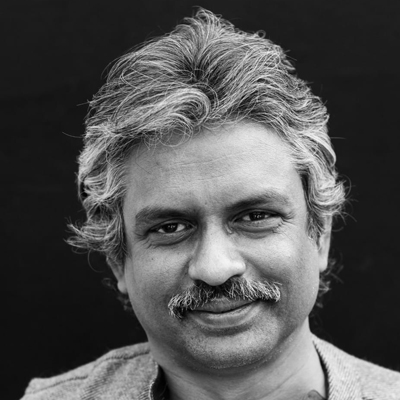 Dr. Anant Maringanti is the Executive Director of the Hyderabad Urban Lab. He is a geographer with a Ph.D. in Geography from the University of Minnesota, a multi-disciplinary research programme run by the Right to the City Foundation. He has taught graduate courses at the National University of Singapore and University of Hyderabad. His research and teaching interests centre on questions of urbanisation and globalization from the South Asian vantage point. He is widely published in national and international academic journals on social movements, politics of development and urbanisation. He has co-authored articles in reputed journals including The International Journal of Urban and Regional Research, Urban Geography, Economic and Political Weekly, Environment and Planning, Duke University Press, Taylor & Francis, and many more. In the early stages of his career, he has also worked as a Correspondent with the New Indian Express.
Dr. Anant Maringanti is the Executive Director of the Hyderabad Urban Lab. He is a geographer with a Ph.D. in Geography from the University of Minnesota, a multi-disciplinary research programme run by the Right to the City Foundation. He has taught graduate courses at the National University of Singapore and University of Hyderabad. His research and teaching interests centre on questions of urbanisation and globalization from the South Asian vantage point. He is widely published in national and international academic journals on social movements, politics of development and urbanisation. He has co-authored articles in reputed journals including The International Journal of Urban and Regional Research, Urban Geography, Economic and Political Weekly, Environment and Planning, Duke University Press, Taylor & Francis, and many more. In the early stages of his career, he has also worked as a Correspondent with the New Indian Express.
Ashima Sood
 Dr. Ashima Sood is an Associate Professor and the Co-Director of the Centre for Urbanism and Cultural Economics at the Anant National University. Dr. Sood’s work has combined qualitative and quantitative methods to examine the forms and origins of informality in Indian cities. Her work has received funding and/or fellowships from the Urban Studies Foundation, the India Foundation of the Arts, the Azim Premji University Foundation, the Indian Institute of Advanced Study and the Centre de Sciences Humaines. Her research has been published in various publications such as Urban Studies; Cities; Territory, Politics, Governance; Journal of Institutional Economics; Marg, the Economic and Political Weekly; the India International Centre Quarterly, to the Wiley-Blackwell Encyclopaedia of Urban and Regional Research and the World Social Science Report 2013, and others. Dr. Ashima is also a prize-winning fiction writer.
Dr. Ashima Sood is an Associate Professor and the Co-Director of the Centre for Urbanism and Cultural Economics at the Anant National University. Dr. Sood’s work has combined qualitative and quantitative methods to examine the forms and origins of informality in Indian cities. Her work has received funding and/or fellowships from the Urban Studies Foundation, the India Foundation of the Arts, the Azim Premji University Foundation, the Indian Institute of Advanced Study and the Centre de Sciences Humaines. Her research has been published in various publications such as Urban Studies; Cities; Territory, Politics, Governance; Journal of Institutional Economics; Marg, the Economic and Political Weekly; the India International Centre Quarterly, to the Wiley-Blackwell Encyclopaedia of Urban and Regional Research and the World Social Science Report 2013, and others. Dr. Ashima is also a prize-winning fiction writer.
Champaka Rajagopal
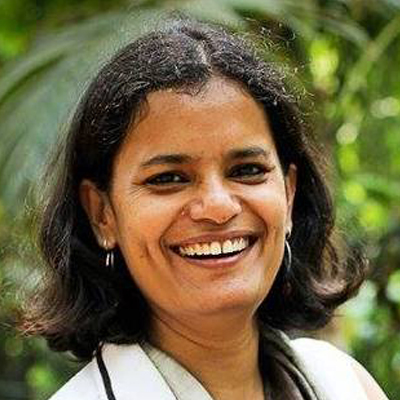 Dr. Champaka Rajagopal is practitioner and researcher in urban policy, planning and governance. With over twenty years of experience of having worked with national, state and local governments in India and abroad, her work cuts across multiple scales and sectors of urban and regional development. She is a visiting faculty at the School of Policy & Governance, Azim Premji University, and also Coordinator, the Hub f\or Law and Policy. Her research primarily focuses on cities and regions, urban policy, governance, and planning, planning for integrated spatial, economic, and social development, urban data governance, participatory planning and decision-making, relationships between states & firms, and intersections between urban & infrastructure governance and planning. She has published several articles in The Hindu, The Deccan Herald, ISOCARP Net (A Paper Platform), and a book chapter “Mapping India’s Capitalism: Old & New Regions” in the book Reciprocity as Regulation, Methodologies for Urban Design for the Informal Economy of the Historic Pete, in Basile, Elisabetta, Harriss-White, Barbara, Lutringer, Christine (Ed).
Dr. Champaka Rajagopal is practitioner and researcher in urban policy, planning and governance. With over twenty years of experience of having worked with national, state and local governments in India and abroad, her work cuts across multiple scales and sectors of urban and regional development. She is a visiting faculty at the School of Policy & Governance, Azim Premji University, and also Coordinator, the Hub f\or Law and Policy. Her research primarily focuses on cities and regions, urban policy, governance, and planning, planning for integrated spatial, economic, and social development, urban data governance, participatory planning and decision-making, relationships between states & firms, and intersections between urban & infrastructure governance and planning. She has published several articles in The Hindu, The Deccan Herald, ISOCARP Net (A Paper Platform), and a book chapter “Mapping India’s Capitalism: Old & New Regions” in the book Reciprocity as Regulation, Methodologies for Urban Design for the Informal Economy of the Historic Pete, in Basile, Elisabetta, Harriss-White, Barbara, Lutringer, Christine (Ed).
Gautam Bhan
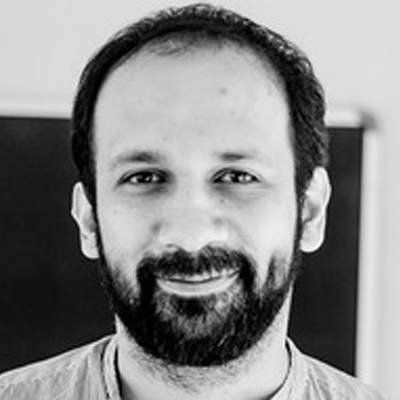 Dr. Gautam Bhan is an urbanist whose work focuses on urban poverty, inequality, social protection, and housing. He is currently Associate Dean, School of Human Development, as well as Senior Lead of Academics and Research at the Indian Institute for Human Settlements (IIHS) in Bengaluru, India. Gautam’s previous research has focused on evictions, citizenship and inequality in Delhi, and at IIHS, he has continued to work on questions of access to affordable and adequate housing. He anchors IIHS’ role as a National Resource Centre with the Ministry of Housing and Urban Affairs, Government of India, and is part of IIHS’ work in affordable housing policy and practice having worked with housing rights movements across the country as well as state governments in Karnataka, Delhi, Rajasthan and Odisha. His new work engages with regimes of urban welfare and social security, including work on urban health. At the School of Human Development, he is building research and practice on questions of the design and delivery of social protection entitlements within urban India. He also has a deep and abiding interest in new urban and planning theory from the south. He has authored articles in Orient Blackswan and Yoda Press, and was a co-editor of the Routledge Companion to Planning in the Global South (2018).
Dr. Gautam Bhan is an urbanist whose work focuses on urban poverty, inequality, social protection, and housing. He is currently Associate Dean, School of Human Development, as well as Senior Lead of Academics and Research at the Indian Institute for Human Settlements (IIHS) in Bengaluru, India. Gautam’s previous research has focused on evictions, citizenship and inequality in Delhi, and at IIHS, he has continued to work on questions of access to affordable and adequate housing. He anchors IIHS’ role as a National Resource Centre with the Ministry of Housing and Urban Affairs, Government of India, and is part of IIHS’ work in affordable housing policy and practice having worked with housing rights movements across the country as well as state governments in Karnataka, Delhi, Rajasthan and Odisha. His new work engages with regimes of urban welfare and social security, including work on urban health. At the School of Human Development, he is building research and practice on questions of the design and delivery of social protection entitlements within urban India. He also has a deep and abiding interest in new urban and planning theory from the south. He has authored articles in Orient Blackswan and Yoda Press, and was a co-editor of the Routledge Companion to Planning in the Global South (2018).
Gopa Samanta
 Dr. Gopa Samanta is a Professor of Geography at the University of Burdwan. Her research interests include Urban development and the changing economic, social and cultural spaces in small cities, Urban Environment and the Water in Cities, Watery Environments – River, Delta and Char, Gender studies – Wo\rk and Emancipation. She has received external grants from Institut de Recherche pour le Développement (IRD) France, French ANR, Australia India Institute, World Bank, Ford Foundation, Indian Council for Social Sciences Research, and University Grants Commission, India. She has co-authored three books on suburban rail commuting, freedom & barriers to women councillors in India, and life on the chars in South Asia (published by Springer and Yale University Press). She has also published Bengali books in Gangchil Publication. Apart from this, she has published in peer-reviewed journals including GeoJournal, Environment, Development, and Sustainability, Space and Culture India, The Hill Geographer, South Asian Water Studies, Jindal Journal of Public Policy, Economic & Political Weekly, Oriental Geographer, etc.
Dr. Gopa Samanta is a Professor of Geography at the University of Burdwan. Her research interests include Urban development and the changing economic, social and cultural spaces in small cities, Urban Environment and the Water in Cities, Watery Environments – River, Delta and Char, Gender studies – Wo\rk and Emancipation. She has received external grants from Institut de Recherche pour le Développement (IRD) France, French ANR, Australia India Institute, World Bank, Ford Foundation, Indian Council for Social Sciences Research, and University Grants Commission, India. She has co-authored three books on suburban rail commuting, freedom & barriers to women councillors in India, and life on the chars in South Asia (published by Springer and Yale University Press). She has also published Bengali books in Gangchil Publication. Apart from this, she has published in peer-reviewed journals including GeoJournal, Environment, Development, and Sustainability, Space and Culture India, The Hill Geographer, South Asian Water Studies, Jindal Journal of Public Policy, Economic & Political Weekly, Oriental Geographer, etc.
Himanshu Burte
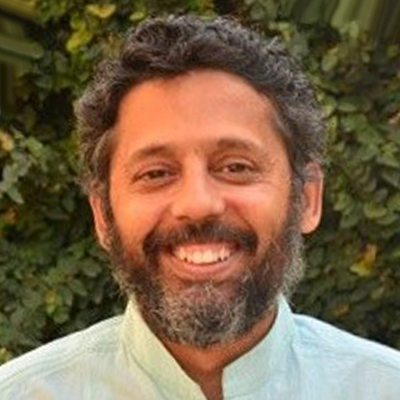 Dr. Himanshu Burte is an Associate Professor, Centre for Urban Science and Engineering (C-USE) in the Ashank Centre for Policy Studies at the Indian Institute of Technology, Bombay. His research areas include urban policy and planning, infrastructural space, urban informality, urban public space, housing, and small cities. He currently teaches courses on urban design and urban space. He has practiced architecture in Mumbai and Goa and published extensively across the professional, popular and academic press for almost thirty years. He has written books, book chapters, journal articles, and reports in publications such as Yoda Press, the Special Issue of Marg, Sage, Economic & Political Weekly, Area and Development Policy, National Centre for Advocacy Studies, Centre for Urban Policy and Governance, School of Habitat Studies, Tata Institute of Social Sciences (TISS), and others.
Dr. Himanshu Burte is an Associate Professor, Centre for Urban Science and Engineering (C-USE) in the Ashank Centre for Policy Studies at the Indian Institute of Technology, Bombay. His research areas include urban policy and planning, infrastructural space, urban informality, urban public space, housing, and small cities. He currently teaches courses on urban design and urban space. He has practiced architecture in Mumbai and Goa and published extensively across the professional, popular and academic press for almost thirty years. He has written books, book chapters, journal articles, and reports in publications such as Yoda Press, the Special Issue of Marg, Sage, Economic & Political Weekly, Area and Development Policy, National Centre for Advocacy Studies, Centre for Urban Policy and Governance, School of Habitat Studies, Tata Institute of Social Sciences (TISS), and others.
J. Devika
 Dr. J. Devika is a Professor at the Centre for Development Studies (CDS) (under the aegis of Government of Kerala & ICSSR, Government of India). She specialises in the History of, and present developments in, Gender, Politics, Development, and Culture in Kerala; the history of Migration and Cosmopolitanism in Kerala; local self- government in Kerala; translations and translation studies; Malayalam literature; and contemporary politics. She was the editor of the CDS Chronicle from 2005 to 2011, and is currently in charge of the Research Unit on Local Self-Government, CDS. She has published books in English and in Malayalam, in Penguin India, Zubaan, Orient Longman, Readme Books, Olive Books, Women’s Imprint, and DC Books. Her journal articles have been published in South Asia Chronicle, Indian Journal of Gender Studies, Writing in Academia, Review of Development and Change, South Asian History and Culture, Modern Asian Studies, Economic & Political Weekly, Development & Change, History and Sociology of South Asia, Environment and Planning, Journal of Commonwealth Literature, Labour and Development, etc.
Dr. J. Devika is a Professor at the Centre for Development Studies (CDS) (under the aegis of Government of Kerala & ICSSR, Government of India). She specialises in the History of, and present developments in, Gender, Politics, Development, and Culture in Kerala; the history of Migration and Cosmopolitanism in Kerala; local self- government in Kerala; translations and translation studies; Malayalam literature; and contemporary politics. She was the editor of the CDS Chronicle from 2005 to 2011, and is currently in charge of the Research Unit on Local Self-Government, CDS. She has published books in English and in Malayalam, in Penguin India, Zubaan, Orient Longman, Readme Books, Olive Books, Women’s Imprint, and DC Books. Her journal articles have been published in South Asia Chronicle, Indian Journal of Gender Studies, Writing in Academia, Review of Development and Change, South Asian History and Culture, Modern Asian Studies, Economic & Political Weekly, Development & Change, History and Sociology of South Asia, Environment and Planning, Journal of Commonwealth Literature, Labour and Development, etc.
Karen Coehlo
 Dr. Karen Coehlo is an Associate Professor of the Madras Institute of Development Studies. She works on urban transformations in India, urban reforms, informal labour, urban ecologies and urban civil society. She is currently a member of the Editorial Advisory Committee for Review of Urban Affairs (RUA), EPW. She is an avid speaker in a number of national and global conferences and seminars. Her publication expertise spans both newspaper / media articles as well as academic publications – including the Scroll, the Op-Ed page in The Hindu, The Caravan, Routledge, International Journal of Housing Policy, INSEE Journal, Review of Development and Change, Cambridge University Press, Economic & Political Weekly, Issue on Urban Poverty, Hong Kong University Press, Elsevier Press, etc. She holds a Ph.D. in Social Anthropology from the University of Arizona.
Dr. Karen Coehlo is an Associate Professor of the Madras Institute of Development Studies. She works on urban transformations in India, urban reforms, informal labour, urban ecologies and urban civil society. She is currently a member of the Editorial Advisory Committee for Review of Urban Affairs (RUA), EPW. She is an avid speaker in a number of national and global conferences and seminars. Her publication expertise spans both newspaper / media articles as well as academic publications – including the Scroll, the Op-Ed page in The Hindu, The Caravan, Routledge, International Journal of Housing Policy, INSEE Journal, Review of Development and Change, Cambridge University Press, Economic & Political Weekly, Issue on Urban Poverty, Hong Kong University Press, Elsevier Press, etc. She holds a Ph.D. in Social Anthropology from the University of Arizona.
Lalitha Kamath
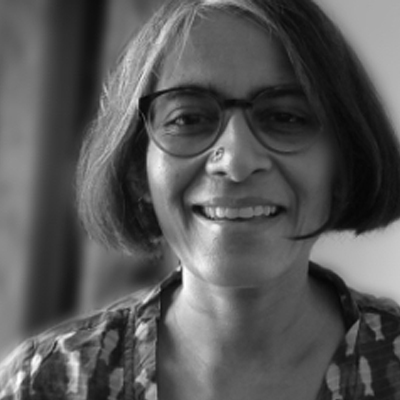 Dr. Lalitha Kamath is an Associate Professor at the Tata Institute of Social Sciences. She is also the Chairperson, Centre for Urban Policy and Governance, School of Habitat Studies at TISS. Trained as an urban planner, her first book was a co-edited volume titled Participolis: Consent and Contention in Neoliberal Urban Governance Subsequent work has focused both on the violence and dispossession of property urbanism in the global south on racial, ethnic, class, and gender lines, but also the bottom-up agency of marginalised groups in unsettling dominant urbanisms. As part of this work, she is engaged in ethnographic study of two kinds of urban frontiers – peripheries and coasts – in Mumbai. Her recent research was on reclaiming fishing commons in Mumbai, slow violence and administration of urban injustice, a short film called “Sagarputra”, and changing concepts of habitation among the indigenous fishing community in Mumbai. Her publications have been featured in journals such as Area Development and Policy, International Journal of Urban and Regional Research, International Journal of Housing Policy, Urbanisation, Economic & Political Weekly, and others.
Dr. Lalitha Kamath is an Associate Professor at the Tata Institute of Social Sciences. She is also the Chairperson, Centre for Urban Policy and Governance, School of Habitat Studies at TISS. Trained as an urban planner, her first book was a co-edited volume titled Participolis: Consent and Contention in Neoliberal Urban Governance Subsequent work has focused both on the violence and dispossession of property urbanism in the global south on racial, ethnic, class, and gender lines, but also the bottom-up agency of marginalised groups in unsettling dominant urbanisms. As part of this work, she is engaged in ethnographic study of two kinds of urban frontiers – peripheries and coasts – in Mumbai. Her recent research was on reclaiming fishing commons in Mumbai, slow violence and administration of urban injustice, a short film called “Sagarputra”, and changing concepts of habitation among the indigenous fishing community in Mumbai. Her publications have been featured in journals such as Area Development and Policy, International Journal of Urban and Regional Research, International Journal of Housing Policy, Urbanisation, Economic & Political Weekly, and others.
Marie-Helene Zerah
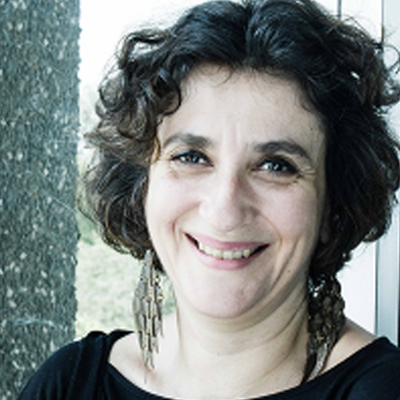 Dr. Marie-Helene Zerah is a senior researcher at the Institute of Research for Development, Paris, currently deputed to the Centre for Policy Research as Senior Visiting Fellow, where she is focusing on the role of small towns in India in the urbanisation process and urban energy governance. Having published a book on the question of water access in Delhi and co-edited a book on the ‘Right to the City in India’, she has worked extensively in the area of urban infrastructure, urban governance and urban democracy in Indian cities. She is also part of the editorial board of the journal Geoforum, and the series editor of ‘Exploring Urban Change in South Asia’ with Springer. She was previously headed the urban dynamics research team at the Centre de Sciences Humaines of New Delhi between 2009 and 2013. She has also worked with the Water and Sanitation Program of the World Bank and the Suez Group in the past, and completed consultancies with various organisations, including the European Union. She received her PhD in Urban Studies from the Paris Institute of Urban Studies.
Dr. Marie-Helene Zerah is a senior researcher at the Institute of Research for Development, Paris, currently deputed to the Centre for Policy Research as Senior Visiting Fellow, where she is focusing on the role of small towns in India in the urbanisation process and urban energy governance. Having published a book on the question of water access in Delhi and co-edited a book on the ‘Right to the City in India’, she has worked extensively in the area of urban infrastructure, urban governance and urban democracy in Indian cities. She is also part of the editorial board of the journal Geoforum, and the series editor of ‘Exploring Urban Change in South Asia’ with Springer. She was previously headed the urban dynamics research team at the Centre de Sciences Humaines of New Delhi between 2009 and 2013. She has also worked with the Water and Sanitation Program of the World Bank and the Suez Group in the past, and completed consultancies with various organisations, including the European Union. She received her PhD in Urban Studies from the Paris Institute of Urban Studies.
Mona Mehta
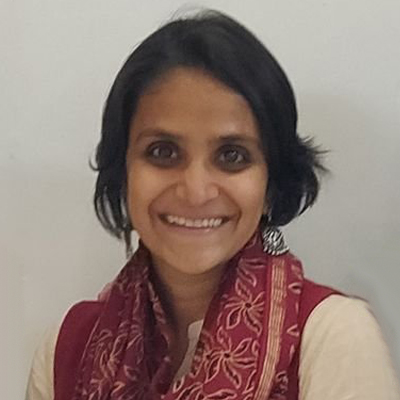 Dr. Mona Mehta is a political scientist by training and an Associate Professor of Social Sciences at the School of Arts and Sciences in Ahmedabad University. Her research focuses on Urban transformations and the remaking of city spaces, Youth aspirations and Skill development discourses, Democracy and its vulnerabilities and the political thought of M. K. Gandhi. She is currently working on a book manuscript that examines youth aspirations and urban transformations in post-liberalisation India. She is the co-editor of Gujarat Beyond Gandhi: Identity, Conflict and Society (Routledge 2010) and has authored scholarly articles and book chapters pertaining to her research interests. Her work has appeared in journals such as South Asian History & Culture, South Asia Journal of South Asian Studies, Contemporary South Asia, Contributions to Indian Sociology, International Journal of Urban and Regional Research, Contributions to Indian Sociology, etc. She is the coordinator of the new interdisciplinary PhD programme in Humanities and Social Sciences at Ahmedabad University.
Dr. Mona Mehta is a political scientist by training and an Associate Professor of Social Sciences at the School of Arts and Sciences in Ahmedabad University. Her research focuses on Urban transformations and the remaking of city spaces, Youth aspirations and Skill development discourses, Democracy and its vulnerabilities and the political thought of M. K. Gandhi. She is currently working on a book manuscript that examines youth aspirations and urban transformations in post-liberalisation India. She is the co-editor of Gujarat Beyond Gandhi: Identity, Conflict and Society (Routledge 2010) and has authored scholarly articles and book chapters pertaining to her research interests. Her work has appeared in journals such as South Asian History & Culture, South Asia Journal of South Asian Studies, Contemporary South Asia, Contributions to Indian Sociology, International Journal of Urban and Regional Research, Contributions to Indian Sociology, etc. She is the coordinator of the new interdisciplinary PhD programme in Humanities and Social Sciences at Ahmedabad University.
Mukta Naik
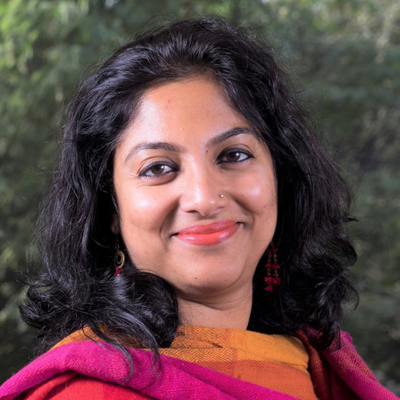 Mukta Naik, a Fellow at CPR, is an architect and urban planner. Her research interests include housing and urban poverty, urban informality, and internal migration, as well as urban transformations in small cities. At CPR, she focuses on understanding the links between internal migration and urbanisation in the Indian context. Ms Naik has written widely in the print and digital media and has also run a market research and media services company. As trustee for a Gurugram-based NGO and a Board Member for a Netherlands-based Foundation, she is also deeply involved with community-based initiatives. She is currently pursuing a PhD in Urban Development and Governance from the Institute for Housing and Urban Development Studies (IHS), Erasmus University Rotterdam. Her journal articles have been published in Shelter, Routledge, Social Change, Urbanisation, Sage, Radical Housing Journal, Urban Studies, Economic & Political Weekly, Environment & Urbanisation Asia, Urban India, Hindustan Times, The Hindu, Connected2Work, Money Control, The Print, The Indian Express, and others. She has authored / co-authored two book chapters in the JustJobs Network Annual Publication, and Routledge, Taylor & Francis.
Mukta Naik, a Fellow at CPR, is an architect and urban planner. Her research interests include housing and urban poverty, urban informality, and internal migration, as well as urban transformations in small cities. At CPR, she focuses on understanding the links between internal migration and urbanisation in the Indian context. Ms Naik has written widely in the print and digital media and has also run a market research and media services company. As trustee for a Gurugram-based NGO and a Board Member for a Netherlands-based Foundation, she is also deeply involved with community-based initiatives. She is currently pursuing a PhD in Urban Development and Governance from the Institute for Housing and Urban Development Studies (IHS), Erasmus University Rotterdam. Her journal articles have been published in Shelter, Routledge, Social Change, Urbanisation, Sage, Radical Housing Journal, Urban Studies, Economic & Political Weekly, Environment & Urbanisation Asia, Urban India, Hindustan Times, The Hindu, Connected2Work, Money Control, The Print, The Indian Express, and others. She has authored / co-authored two book chapters in the JustJobs Network Annual Publication, and Routledge, Taylor & Francis.
Neha Sami
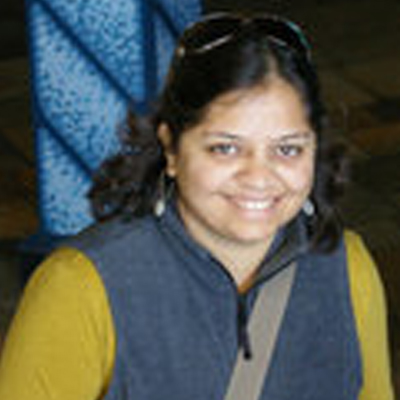 Dr. Neha Sami is the Associate Dean, School of Environment and Sustainability and Senior Lead, Academics & Research at the Indian Institute of Human Settlements. She studies urban and regional development and governance in post-liberalisation India. Her research focuses on the governance arrangements of mega-projects, regional planning and on environmental governance questions in Indian cities, particularly around issues of climate change adaptation. She is currently studying industrial corridor development projects between Indian cities like the Delhi-Mumbai Industrial Corridor, focusing particularly on governance issues. She is also interested in regional approaches to land use planning. Neha is also a member of the Editorial Collective of Urbanisation (published by SAGE). Her publications have been featured in Environment and Urbanisation, Geoforum, Area Development & Policy, Economic & Political Weekly, International Journal of Urban & Regional Research, Land Use Policy, etc.
Dr. Neha Sami is the Associate Dean, School of Environment and Sustainability and Senior Lead, Academics & Research at the Indian Institute of Human Settlements. She studies urban and regional development and governance in post-liberalisation India. Her research focuses on the governance arrangements of mega-projects, regional planning and on environmental governance questions in Indian cities, particularly around issues of climate change adaptation. She is currently studying industrial corridor development projects between Indian cities like the Delhi-Mumbai Industrial Corridor, focusing particularly on governance issues. She is also interested in regional approaches to land use planning. Neha is also a member of the Editorial Collective of Urbanisation (published by SAGE). Her publications have been featured in Environment and Urbanisation, Geoforum, Area Development & Policy, Economic & Political Weekly, International Journal of Urban & Regional Research, Land Use Policy, etc.
Partha Mukhopadhyay
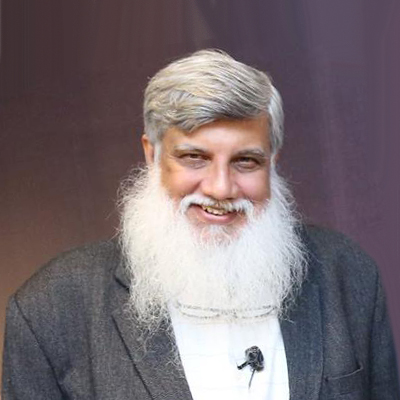 Dr. Partha Mukhopadhyay is a Senior Fellow at CPR. has published extensively, writes frequently for the national media and has also been associated with a number of government committees. Most recently, he was chair of the Working Group on Migration, Government of India and member of the High-Level Railway Restructuring Committee, Ministry of Railways and of the Technical Advisory Committee of the Ministry of Housing and Urban Poverty Alleviation. His research interests are in urbanisation, infrastructure, and the development paths of India and China. He has written journal articles in the International Journal of Urban and Regional Research, IIC Quarterly Journal, India Seminar, Economic & Political Weekly, Environment & Urbanisation ASIA, and opinion pieces for The Hindu, The Times of India, Hindustan Times, and the Indian Express.
Dr. Partha Mukhopadhyay is a Senior Fellow at CPR. has published extensively, writes frequently for the national media and has also been associated with a number of government committees. Most recently, he was chair of the Working Group on Migration, Government of India and member of the High-Level Railway Restructuring Committee, Ministry of Railways and of the Technical Advisory Committee of the Ministry of Housing and Urban Poverty Alleviation. His research interests are in urbanisation, infrastructure, and the development paths of India and China. He has written journal articles in the International Journal of Urban and Regional Research, IIC Quarterly Journal, India Seminar, Economic & Political Weekly, Environment & Urbanisation ASIA, and opinion pieces for The Hindu, The Times of India, Hindustan Times, and the Indian Express.
Ratoola Kundu
 Dr Ratoola Kundu is an Assistant Professor, Mumbai Campus, Centre for Urban Policy and Governance, School of Habitat Studies, Tata Institute of Social Sciences. She works on urban informality, urban theory, political economy of urban restructuring, urban contestations and politics over land, housing and participation in planning, sustainable and accessible urban transportation, informal urban livelihoods and claims to the city, new towns and the politics of planning and development of urban peripheries. She has published articles in the Review of Urban Affairs (EPW), the University of Minnesota Press, and has published a book chapter in the book “Mega Urbanisation in the Global South” (Routledge).
Dr Ratoola Kundu is an Assistant Professor, Mumbai Campus, Centre for Urban Policy and Governance, School of Habitat Studies, Tata Institute of Social Sciences. She works on urban informality, urban theory, political economy of urban restructuring, urban contestations and politics over land, housing and participation in planning, sustainable and accessible urban transportation, informal urban livelihoods and claims to the city, new towns and the politics of planning and development of urban peripheries. She has published articles in the Review of Urban Affairs (EPW), the University of Minnesota Press, and has published a book chapter in the book “Mega Urbanisation in the Global South” (Routledge).
Rohit Negi
 Dr. Rohit Negi is an Associate Professor, School of Global Affairs, and Director, Centre for Community Knowledge at Dr. B.R. Ambedkar University. He mainly works on socio-ecological vulnerability, development and urbanisation (intersection with health, education, infrastructure), urban spaces, political ecology of air, and urban environment & ecology. He is a member of the International Advisory Board, Antipode, and a member, Steering Committee, Association of Asian Studies in Africa (A-Asia). He has written / co-authored several books, chapters in peer-reviewed books, and articles in peer-reviewed journals including: Routledge, Springer, Science, Scientists, and Society, Comparative Studies of South Asia, Africa and the Middle East, Urbanisation, Journal of South African Studies, Geoforum, African Studies Quarterly, Review of African Political Economy, African Geographical Review, Oxford University Press, Palgrave-Macmillan, Economic & Political Weekly, The Scroll, & others.
Dr. Rohit Negi is an Associate Professor, School of Global Affairs, and Director, Centre for Community Knowledge at Dr. B.R. Ambedkar University. He mainly works on socio-ecological vulnerability, development and urbanisation (intersection with health, education, infrastructure), urban spaces, political ecology of air, and urban environment & ecology. He is a member of the International Advisory Board, Antipode, and a member, Steering Committee, Association of Asian Studies in Africa (A-Asia). He has written / co-authored several books, chapters in peer-reviewed books, and articles in peer-reviewed journals including: Routledge, Springer, Science, Scientists, and Society, Comparative Studies of South Asia, Africa and the Middle East, Urbanisation, Journal of South African Studies, Geoforum, African Studies Quarterly, Review of African Political Economy, African Geographical Review, Oxford University Press, Palgrave-Macmillan, Economic & Political Weekly, The Scroll, & others.
Susmitha Pati
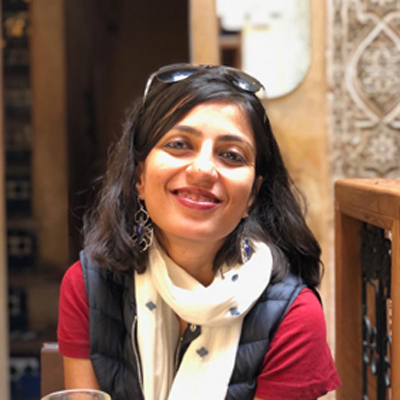 Dr. Sushmitha Pati is an Assistant Professor of Political Science at the National Law School of India University. She teaches course on politics and society in India, political science, and politics & the global world order. She is a political scientist who has taught previously at Delhi University and Azim Premji University, Bangalore. Her research interests include Urban politics, Political Economy, State and Democracy, and Gender. Her upcoming book is titled “Properties of Rent: The Political Economy of Urban Villages in Delhi”, which is to be published by the Cambridge University Press, New Delhi. Her articles and working papers have been published in Contributions to Indian Sociology, Sage, Springer, Economic & Political Weekly, Journal of Indian Law & Society, SOAS South Asia Institute Working Papers, Policies & Practices, Contemporary South Asia, Café Dissensus, Syntalk, The Wire, and others.
Dr. Sushmitha Pati is an Assistant Professor of Political Science at the National Law School of India University. She teaches course on politics and society in India, political science, and politics & the global world order. She is a political scientist who has taught previously at Delhi University and Azim Premji University, Bangalore. Her research interests include Urban politics, Political Economy, State and Democracy, and Gender. Her upcoming book is titled “Properties of Rent: The Political Economy of Urban Villages in Delhi”, which is to be published by the Cambridge University Press, New Delhi. Her articles and working papers have been published in Contributions to Indian Sociology, Sage, Springer, Economic & Political Weekly, Journal of Indian Law & Society, SOAS South Asia Institute Working Papers, Policies & Practices, Contemporary South Asia, Café Dissensus, Syntalk, The Wire, and others.
Venugopal Maddipati
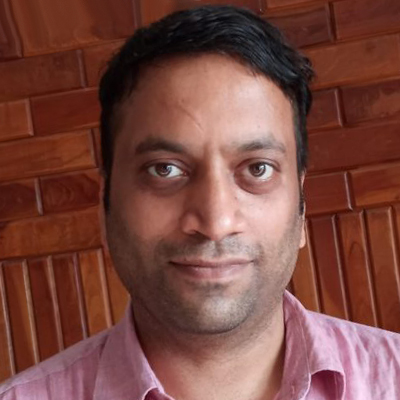 Dr. Venugopal Maddipati is the Dean In-Charge, School of Design, at Dr. B.R. Ambedkar University. He specialises in art history and architectural design. He is a referee for the Art Journal and the Open Library for the Humanities. He works on community art projects and architectural projects: in 2004, he directed a short film called “Wounded City: A Global New Zealand” with the contemporary artist Alfredo Jaar, 2004. He has written books, newspaper articles, and journal articles in Routledge, The Tribune, Ecologies, Aesthetics and Histories of Art, Marg, Liquescent Materiality: Water Histories in South Asia 1500 to the Present, Journal of South Asian Studies, Journal of Landscape Architecture, Blog for Transregional Research, Nehru Memorial Library Occasional Paper Series, and Ashgate Press. He has taught a variety of courses including Technology and Society, History of Indian Art & Architecture, Gender, Sexuality, & Design, Theory of Design, World Architectural History, and others.
Dr. Venugopal Maddipati is the Dean In-Charge, School of Design, at Dr. B.R. Ambedkar University. He specialises in art history and architectural design. He is a referee for the Art Journal and the Open Library for the Humanities. He works on community art projects and architectural projects: in 2004, he directed a short film called “Wounded City: A Global New Zealand” with the contemporary artist Alfredo Jaar, 2004. He has written books, newspaper articles, and journal articles in Routledge, The Tribune, Ecologies, Aesthetics and Histories of Art, Marg, Liquescent Materiality: Water Histories in South Asia 1500 to the Present, Journal of South Asian Studies, Journal of Landscape Architecture, Blog for Transregional Research, Nehru Memorial Library Occasional Paper Series, and Ashgate Press. He has taught a variety of courses including Technology and Society, History of Indian Art & Architecture, Gender, Sexuality, & Design, Theory of Design, World Architectural History, and others.



 Dr. Amita Bhide is Chair Professor, National Jal Jeevan Mission, School of Habitat Studies, Tata Institute of Social Sciences. She works closely with issues related to urban poor communities, community organisation and housing rights movements, and advocacy groups. Professor Bhide’s recent work at the School of Habitat Studies concerns urban transformations and their link to inclusive and sustainable development. She has conducted extensive research in the fields of urban local governance and planning, water and sanitation, housing and land issues. She seeks to develop a theoretical and actionable model of urbanisation that is relevant for the global south through an engagement with several transformative groups at the city, provincial and national scales. Her recent publications include – ‘Colonising the Slum’, ‘ The regularising state’, ‘ Comparing Informalities’, ‘Directed Decentralisation- the experience of JNNURM in Maharashtra’. She has also co-edited a book co-edited along with Professor Himanshu Burte on ‘Parallax: Contemporary Urban Policy in India’. Apart from this, articles have been featured in multiple international and national journals of repute.
Dr. Amita Bhide is Chair Professor, National Jal Jeevan Mission, School of Habitat Studies, Tata Institute of Social Sciences. She works closely with issues related to urban poor communities, community organisation and housing rights movements, and advocacy groups. Professor Bhide’s recent work at the School of Habitat Studies concerns urban transformations and their link to inclusive and sustainable development. She has conducted extensive research in the fields of urban local governance and planning, water and sanitation, housing and land issues. She seeks to develop a theoretical and actionable model of urbanisation that is relevant for the global south through an engagement with several transformative groups at the city, provincial and national scales. Her recent publications include – ‘Colonising the Slum’, ‘ The regularising state’, ‘ Comparing Informalities’, ‘Directed Decentralisation- the experience of JNNURM in Maharashtra’. She has also co-edited a book co-edited along with Professor Himanshu Burte on ‘Parallax: Contemporary Urban Policy in India’. Apart from this, articles have been featured in multiple international and national journals of repute. Dr. Anant Maringanti is the Executive Director of the Hyderabad Urban Lab. He is a geographer with a Ph.D. in Geography from the University of Minnesota, a multi-disciplinary research programme run by the Right to the City Foundation. He has taught graduate courses at the National University of Singapore and University of Hyderabad. His research and teaching interests centre on questions of urbanisation and globalization from the South Asian vantage point. He is widely published in national and international academic journals on social movements, politics of development and urbanisation. He has co-authored articles in reputed journals including The International Journal of Urban and Regional Research, Urban Geography, Economic and Political Weekly, Environment and Planning, Duke University Press, Taylor & Francis, and many more. In the early stages of his career, he has also worked as a Correspondent with the New Indian Express.
Dr. Anant Maringanti is the Executive Director of the Hyderabad Urban Lab. He is a geographer with a Ph.D. in Geography from the University of Minnesota, a multi-disciplinary research programme run by the Right to the City Foundation. He has taught graduate courses at the National University of Singapore and University of Hyderabad. His research and teaching interests centre on questions of urbanisation and globalization from the South Asian vantage point. He is widely published in national and international academic journals on social movements, politics of development and urbanisation. He has co-authored articles in reputed journals including The International Journal of Urban and Regional Research, Urban Geography, Economic and Political Weekly, Environment and Planning, Duke University Press, Taylor & Francis, and many more. In the early stages of his career, he has also worked as a Correspondent with the New Indian Express. Dr. Ashima Sood is an Associate Professor and the Co-Director of the Centre for Urbanism and Cultural Economics at the Anant National University. Dr. Sood’s work has combined qualitative and quantitative methods to examine the forms and origins of informality in Indian cities. Her work has received funding and/or fellowships from the Urban Studies Foundation, the India Foundation of the Arts, the Azim Premji University Foundation, the Indian Institute of Advanced Study and the Centre de Sciences Humaines. Her research has been published in various publications such as Urban Studies; Cities; Territory, Politics, Governance; Journal of Institutional Economics; Marg, the Economic and Political Weekly; the India International Centre Quarterly, to the Wiley-Blackwell Encyclopaedia of Urban and Regional Research and the World Social Science Report 2013, and others. Dr. Ashima is also a prize-winning fiction writer.
Dr. Ashima Sood is an Associate Professor and the Co-Director of the Centre for Urbanism and Cultural Economics at the Anant National University. Dr. Sood’s work has combined qualitative and quantitative methods to examine the forms and origins of informality in Indian cities. Her work has received funding and/or fellowships from the Urban Studies Foundation, the India Foundation of the Arts, the Azim Premji University Foundation, the Indian Institute of Advanced Study and the Centre de Sciences Humaines. Her research has been published in various publications such as Urban Studies; Cities; Territory, Politics, Governance; Journal of Institutional Economics; Marg, the Economic and Political Weekly; the India International Centre Quarterly, to the Wiley-Blackwell Encyclopaedia of Urban and Regional Research and the World Social Science Report 2013, and others. Dr. Ashima is also a prize-winning fiction writer. Dr. Champaka Rajagopal is practitioner and researcher in urban policy, planning and governance. With over twenty years of experience of having worked with national, state and local governments in India and abroad, her work cuts across multiple scales and sectors of urban and regional development. She is a visiting faculty at the School of Policy & Governance, Azim Premji University, and also Coordinator, the Hub f\or Law and Policy. Her research primarily focuses on cities and regions, urban policy, governance, and planning, planning for integrated spatial, economic, and social development, urban data governance, participatory planning and decision-making, relationships between states & firms, and intersections between urban & infrastructure governance and planning. She has published several articles in The Hindu, The Deccan Herald, ISOCARP Net (A Paper Platform), and a book chapter “Mapping India’s Capitalism: Old & New Regions” in the book Reciprocity as Regulation, Methodologies for Urban Design for the Informal Economy of the Historic Pete, in Basile, Elisabetta, Harriss-White, Barbara, Lutringer, Christine (Ed).
Dr. Champaka Rajagopal is practitioner and researcher in urban policy, planning and governance. With over twenty years of experience of having worked with national, state and local governments in India and abroad, her work cuts across multiple scales and sectors of urban and regional development. She is a visiting faculty at the School of Policy & Governance, Azim Premji University, and also Coordinator, the Hub f\or Law and Policy. Her research primarily focuses on cities and regions, urban policy, governance, and planning, planning for integrated spatial, economic, and social development, urban data governance, participatory planning and decision-making, relationships between states & firms, and intersections between urban & infrastructure governance and planning. She has published several articles in The Hindu, The Deccan Herald, ISOCARP Net (A Paper Platform), and a book chapter “Mapping India’s Capitalism: Old & New Regions” in the book Reciprocity as Regulation, Methodologies for Urban Design for the Informal Economy of the Historic Pete, in Basile, Elisabetta, Harriss-White, Barbara, Lutringer, Christine (Ed). Dr. Gautam Bhan is an urbanist whose work focuses on urban poverty, inequality, social protection, and housing. He is currently Associate Dean, School of Human Development, as well as Senior Lead of Academics and Research at the Indian Institute for Human Settlements (IIHS) in Bengaluru, India. Gautam’s previous research has focused on evictions, citizenship and inequality in Delhi, and at IIHS, he has continued to work on questions of access to affordable and adequate housing. He anchors IIHS’ role as a National Resource Centre with the Ministry of Housing and Urban Affairs, Government of India, and is part of IIHS’ work in affordable housing policy and practice having worked with housing rights movements across the country as well as state governments in Karnataka, Delhi, Rajasthan and Odisha. His new work engages with regimes of urban welfare and social security, including work on urban health. At the School of Human Development, he is building research and practice on questions of the design and delivery of social protection entitlements within urban India. He also has a deep and abiding interest in new urban and planning theory from the south. He has authored articles in Orient Blackswan and Yoda Press, and was a co-editor of the Routledge Companion to Planning in the Global South (2018).
Dr. Gautam Bhan is an urbanist whose work focuses on urban poverty, inequality, social protection, and housing. He is currently Associate Dean, School of Human Development, as well as Senior Lead of Academics and Research at the Indian Institute for Human Settlements (IIHS) in Bengaluru, India. Gautam’s previous research has focused on evictions, citizenship and inequality in Delhi, and at IIHS, he has continued to work on questions of access to affordable and adequate housing. He anchors IIHS’ role as a National Resource Centre with the Ministry of Housing and Urban Affairs, Government of India, and is part of IIHS’ work in affordable housing policy and practice having worked with housing rights movements across the country as well as state governments in Karnataka, Delhi, Rajasthan and Odisha. His new work engages with regimes of urban welfare and social security, including work on urban health. At the School of Human Development, he is building research and practice on questions of the design and delivery of social protection entitlements within urban India. He also has a deep and abiding interest in new urban and planning theory from the south. He has authored articles in Orient Blackswan and Yoda Press, and was a co-editor of the Routledge Companion to Planning in the Global South (2018). Dr. Gopa Samanta is a Professor of Geography at the University of Burdwan. Her research interests include Urban development and the changing economic, social and cultural spaces in small cities, Urban Environment and the Water in Cities, Watery Environments – River, Delta and Char, Gender studies – Wo\rk and Emancipation. She has received external grants from Institut de Recherche pour le Développement (IRD) France, French ANR, Australia India Institute, World Bank, Ford Foundation, Indian Council for Social Sciences Research, and University Grants Commission, India. She has co-authored three books on suburban rail commuting, freedom & barriers to women councillors in India, and life on the chars in South Asia (published by Springer and Yale University Press). She has also published Bengali books in Gangchil Publication. Apart from this, she has published in peer-reviewed journals including GeoJournal, Environment, Development, and Sustainability, Space and Culture India, The Hill Geographer, South Asian Water Studies, Jindal Journal of Public Policy, Economic & Political Weekly, Oriental Geographer, etc.
Dr. Gopa Samanta is a Professor of Geography at the University of Burdwan. Her research interests include Urban development and the changing economic, social and cultural spaces in small cities, Urban Environment and the Water in Cities, Watery Environments – River, Delta and Char, Gender studies – Wo\rk and Emancipation. She has received external grants from Institut de Recherche pour le Développement (IRD) France, French ANR, Australia India Institute, World Bank, Ford Foundation, Indian Council for Social Sciences Research, and University Grants Commission, India. She has co-authored three books on suburban rail commuting, freedom & barriers to women councillors in India, and life on the chars in South Asia (published by Springer and Yale University Press). She has also published Bengali books in Gangchil Publication. Apart from this, she has published in peer-reviewed journals including GeoJournal, Environment, Development, and Sustainability, Space and Culture India, The Hill Geographer, South Asian Water Studies, Jindal Journal of Public Policy, Economic & Political Weekly, Oriental Geographer, etc. Dr. Himanshu Burte is an Associate Professor, Centre for Urban Science and Engineering (C-USE) in the Ashank Centre for Policy Studies at the Indian Institute of Technology, Bombay. His research areas include urban policy and planning, infrastructural space, urban informality, urban public space, housing, and small cities. He currently teaches courses on urban design and urban space. He has practiced architecture in Mumbai and Goa and published extensively across the professional, popular and academic press for almost thirty years. He has written books, book chapters, journal articles, and reports in publications such as Yoda Press, the Special Issue of Marg, Sage, Economic & Political Weekly, Area and Development Policy, National Centre for Advocacy Studies, Centre for Urban Policy and Governance, School of Habitat Studies, Tata Institute of Social Sciences (TISS), and others.
Dr. Himanshu Burte is an Associate Professor, Centre for Urban Science and Engineering (C-USE) in the Ashank Centre for Policy Studies at the Indian Institute of Technology, Bombay. His research areas include urban policy and planning, infrastructural space, urban informality, urban public space, housing, and small cities. He currently teaches courses on urban design and urban space. He has practiced architecture in Mumbai and Goa and published extensively across the professional, popular and academic press for almost thirty years. He has written books, book chapters, journal articles, and reports in publications such as Yoda Press, the Special Issue of Marg, Sage, Economic & Political Weekly, Area and Development Policy, National Centre for Advocacy Studies, Centre for Urban Policy and Governance, School of Habitat Studies, Tata Institute of Social Sciences (TISS), and others. Dr. J. Devika is a Professor at the Centre for Development Studies (CDS) (under the aegis of Government of Kerala & ICSSR, Government of India). She specialises in the History of, and present developments in, Gender, Politics, Development, and Culture in Kerala; the history of Migration and Cosmopolitanism in Kerala; local self- government in Kerala; translations and translation studies; Malayalam literature; and contemporary politics. She was the editor of the CDS Chronicle from 2005 to 2011, and is currently in charge of the Research Unit on Local Self-Government, CDS. She has published books in English and in Malayalam, in Penguin India, Zubaan, Orient Longman, Readme Books, Olive Books, Women’s Imprint, and DC Books. Her journal articles have been published in South Asia Chronicle, Indian Journal of Gender Studies, Writing in Academia, Review of Development and Change, South Asian History and Culture, Modern Asian Studies, Economic & Political Weekly, Development & Change, History and Sociology of South Asia, Environment and Planning, Journal of Commonwealth Literature, Labour and Development, etc.
Dr. J. Devika is a Professor at the Centre for Development Studies (CDS) (under the aegis of Government of Kerala & ICSSR, Government of India). She specialises in the History of, and present developments in, Gender, Politics, Development, and Culture in Kerala; the history of Migration and Cosmopolitanism in Kerala; local self- government in Kerala; translations and translation studies; Malayalam literature; and contemporary politics. She was the editor of the CDS Chronicle from 2005 to 2011, and is currently in charge of the Research Unit on Local Self-Government, CDS. She has published books in English and in Malayalam, in Penguin India, Zubaan, Orient Longman, Readme Books, Olive Books, Women’s Imprint, and DC Books. Her journal articles have been published in South Asia Chronicle, Indian Journal of Gender Studies, Writing in Academia, Review of Development and Change, South Asian History and Culture, Modern Asian Studies, Economic & Political Weekly, Development & Change, History and Sociology of South Asia, Environment and Planning, Journal of Commonwealth Literature, Labour and Development, etc. Dr. Karen Coehlo is an Associate Professor of the Madras Institute of Development Studies. She works on urban transformations in India, urban reforms, informal labour, urban ecologies and urban civil society. She is currently a member of the Editorial Advisory Committee for Review of Urban Affairs (RUA), EPW. She is an avid speaker in a number of national and global conferences and seminars. Her publication expertise spans both newspaper / media articles as well as academic publications – including the Scroll, the Op-Ed page in The Hindu, The Caravan, Routledge, International Journal of Housing Policy, INSEE Journal, Review of Development and Change, Cambridge University Press, Economic & Political Weekly, Issue on Urban Poverty, Hong Kong University Press, Elsevier Press, etc. She holds a Ph.D. in Social Anthropology from the University of Arizona.
Dr. Karen Coehlo is an Associate Professor of the Madras Institute of Development Studies. She works on urban transformations in India, urban reforms, informal labour, urban ecologies and urban civil society. She is currently a member of the Editorial Advisory Committee for Review of Urban Affairs (RUA), EPW. She is an avid speaker in a number of national and global conferences and seminars. Her publication expertise spans both newspaper / media articles as well as academic publications – including the Scroll, the Op-Ed page in The Hindu, The Caravan, Routledge, International Journal of Housing Policy, INSEE Journal, Review of Development and Change, Cambridge University Press, Economic & Political Weekly, Issue on Urban Poverty, Hong Kong University Press, Elsevier Press, etc. She holds a Ph.D. in Social Anthropology from the University of Arizona. Dr. Lalitha Kamath is an Associate Professor at the Tata Institute of Social Sciences. She is also the Chairperson, Centre for Urban Policy and Governance, School of Habitat Studies at TISS. Trained as an urban planner, her first book was a co-edited volume titled Participolis: Consent and Contention in Neoliberal Urban Governance Subsequent work has focused both on the violence and dispossession of property urbanism in the global south on racial, ethnic, class, and gender lines, but also the bottom-up agency of marginalised groups in unsettling dominant urbanisms. As part of this work, she is engaged in ethnographic study of two kinds of urban frontiers – peripheries and coasts – in Mumbai. Her recent research was on reclaiming fishing commons in Mumbai, slow violence and administration of urban injustice, a short film called “Sagarputra”, and changing concepts of habitation among the indigenous fishing community in Mumbai. Her publications have been featured in journals such as Area Development and Policy, International Journal of Urban and Regional Research, International Journal of Housing Policy, Urbanisation, Economic & Political Weekly, and others.
Dr. Lalitha Kamath is an Associate Professor at the Tata Institute of Social Sciences. She is also the Chairperson, Centre for Urban Policy and Governance, School of Habitat Studies at TISS. Trained as an urban planner, her first book was a co-edited volume titled Participolis: Consent and Contention in Neoliberal Urban Governance Subsequent work has focused both on the violence and dispossession of property urbanism in the global south on racial, ethnic, class, and gender lines, but also the bottom-up agency of marginalised groups in unsettling dominant urbanisms. As part of this work, she is engaged in ethnographic study of two kinds of urban frontiers – peripheries and coasts – in Mumbai. Her recent research was on reclaiming fishing commons in Mumbai, slow violence and administration of urban injustice, a short film called “Sagarputra”, and changing concepts of habitation among the indigenous fishing community in Mumbai. Her publications have been featured in journals such as Area Development and Policy, International Journal of Urban and Regional Research, International Journal of Housing Policy, Urbanisation, Economic & Political Weekly, and others. Dr. Marie-Helene Zerah is a senior researcher at the Institute of Research for Development, Paris, currently deputed to the Centre for Policy Research as Senior Visiting Fellow, where she is focusing on the role of small towns in India in the urbanisation process and urban energy governance. Having published a book on the question of water access in Delhi and co-edited a book on the ‘Right to the City in India’, she has worked extensively in the area of urban infrastructure, urban governance and urban democracy in Indian cities. She is also part of the editorial board of the journal Geoforum, and the series editor of ‘Exploring Urban Change in South Asia’ with Springer. She was previously headed the urban dynamics research team at the Centre de Sciences Humaines of New Delhi between 2009 and 2013. She has also worked with the Water and Sanitation Program of the World Bank and the Suez Group in the past, and completed consultancies with various organisations, including the European Union. She received her PhD in Urban Studies from the Paris Institute of Urban Studies.
Dr. Marie-Helene Zerah is a senior researcher at the Institute of Research for Development, Paris, currently deputed to the Centre for Policy Research as Senior Visiting Fellow, where she is focusing on the role of small towns in India in the urbanisation process and urban energy governance. Having published a book on the question of water access in Delhi and co-edited a book on the ‘Right to the City in India’, she has worked extensively in the area of urban infrastructure, urban governance and urban democracy in Indian cities. She is also part of the editorial board of the journal Geoforum, and the series editor of ‘Exploring Urban Change in South Asia’ with Springer. She was previously headed the urban dynamics research team at the Centre de Sciences Humaines of New Delhi between 2009 and 2013. She has also worked with the Water and Sanitation Program of the World Bank and the Suez Group in the past, and completed consultancies with various organisations, including the European Union. She received her PhD in Urban Studies from the Paris Institute of Urban Studies. Dr. Mona Mehta is a political scientist by training and an Associate Professor of Social Sciences at the School of Arts and Sciences in Ahmedabad University. Her research focuses on Urban transformations and the remaking of city spaces, Youth aspirations and Skill development discourses, Democracy and its vulnerabilities and the political thought of M. K. Gandhi. She is currently working on a book manuscript that examines youth aspirations and urban transformations in post-liberalisation India. She is the co-editor of Gujarat Beyond Gandhi: Identity, Conflict and Society (Routledge 2010) and has authored scholarly articles and book chapters pertaining to her research interests. Her work has appeared in journals such as South Asian History & Culture, South Asia Journal of South Asian Studies, Contemporary South Asia, Contributions to Indian Sociology, International Journal of Urban and Regional Research, Contributions to Indian Sociology, etc. She is the coordinator of the new interdisciplinary PhD programme in Humanities and Social Sciences at Ahmedabad University.
Dr. Mona Mehta is a political scientist by training and an Associate Professor of Social Sciences at the School of Arts and Sciences in Ahmedabad University. Her research focuses on Urban transformations and the remaking of city spaces, Youth aspirations and Skill development discourses, Democracy and its vulnerabilities and the political thought of M. K. Gandhi. She is currently working on a book manuscript that examines youth aspirations and urban transformations in post-liberalisation India. She is the co-editor of Gujarat Beyond Gandhi: Identity, Conflict and Society (Routledge 2010) and has authored scholarly articles and book chapters pertaining to her research interests. Her work has appeared in journals such as South Asian History & Culture, South Asia Journal of South Asian Studies, Contemporary South Asia, Contributions to Indian Sociology, International Journal of Urban and Regional Research, Contributions to Indian Sociology, etc. She is the coordinator of the new interdisciplinary PhD programme in Humanities and Social Sciences at Ahmedabad University. Mukta Naik, a Fellow at CPR, is an architect and urban planner. Her research interests include housing and urban poverty, urban informality, and internal migration, as well as urban transformations in small cities. At CPR, she focuses on understanding the links between internal migration and urbanisation in the Indian context. Ms Naik has written widely in the print and digital media and has also run a market research and media services company. As trustee for a Gurugram-based NGO and a Board Member for a Netherlands-based Foundation, she is also deeply involved with community-based initiatives. She is currently pursuing a PhD in Urban Development and Governance from the Institute for Housing and Urban Development Studies (IHS), Erasmus University Rotterdam. Her journal articles have been published in Shelter, Routledge, Social Change, Urbanisation, Sage, Radical Housing Journal, Urban Studies, Economic & Political Weekly, Environment & Urbanisation Asia, Urban India, Hindustan Times, The Hindu, Connected2Work, Money Control, The Print, The Indian Express, and others. She has authored / co-authored two book chapters in the JustJobs Network Annual Publication, and Routledge, Taylor & Francis.
Mukta Naik, a Fellow at CPR, is an architect and urban planner. Her research interests include housing and urban poverty, urban informality, and internal migration, as well as urban transformations in small cities. At CPR, she focuses on understanding the links between internal migration and urbanisation in the Indian context. Ms Naik has written widely in the print and digital media and has also run a market research and media services company. As trustee for a Gurugram-based NGO and a Board Member for a Netherlands-based Foundation, she is also deeply involved with community-based initiatives. She is currently pursuing a PhD in Urban Development and Governance from the Institute for Housing and Urban Development Studies (IHS), Erasmus University Rotterdam. Her journal articles have been published in Shelter, Routledge, Social Change, Urbanisation, Sage, Radical Housing Journal, Urban Studies, Economic & Political Weekly, Environment & Urbanisation Asia, Urban India, Hindustan Times, The Hindu, Connected2Work, Money Control, The Print, The Indian Express, and others. She has authored / co-authored two book chapters in the JustJobs Network Annual Publication, and Routledge, Taylor & Francis. Dr. Neha Sami is the Associate Dean, School of Environment and Sustainability and Senior Lead, Academics & Research at the Indian Institute of Human Settlements. She studies urban and regional development and governance in post-liberalisation India. Her research focuses on the governance arrangements of mega-projects, regional planning and on environmental governance questions in Indian cities, particularly around issues of climate change adaptation. She is currently studying industrial corridor development projects between Indian cities like the Delhi-Mumbai Industrial Corridor, focusing particularly on governance issues. She is also interested in regional approaches to land use planning. Neha is also a member of the Editorial Collective of Urbanisation (published by SAGE). Her publications have been featured in Environment and Urbanisation, Geoforum, Area Development & Policy, Economic & Political Weekly, International Journal of Urban & Regional Research, Land Use Policy, etc.
Dr. Neha Sami is the Associate Dean, School of Environment and Sustainability and Senior Lead, Academics & Research at the Indian Institute of Human Settlements. She studies urban and regional development and governance in post-liberalisation India. Her research focuses on the governance arrangements of mega-projects, regional planning and on environmental governance questions in Indian cities, particularly around issues of climate change adaptation. She is currently studying industrial corridor development projects between Indian cities like the Delhi-Mumbai Industrial Corridor, focusing particularly on governance issues. She is also interested in regional approaches to land use planning. Neha is also a member of the Editorial Collective of Urbanisation (published by SAGE). Her publications have been featured in Environment and Urbanisation, Geoforum, Area Development & Policy, Economic & Political Weekly, International Journal of Urban & Regional Research, Land Use Policy, etc. Dr. Partha Mukhopadhyay is a Senior Fellow at CPR. has published extensively, writes frequently for the national media and has also been associated with a number of government committees. Most recently, he was chair of the Working Group on Migration, Government of India and member of the High-Level Railway Restructuring Committee, Ministry of Railways and of the Technical Advisory Committee of the Ministry of Housing and Urban Poverty Alleviation. His research interests are in urbanisation, infrastructure, and the development paths of India and China. He has written journal articles in the International Journal of Urban and Regional Research, IIC Quarterly Journal, India Seminar, Economic & Political Weekly, Environment & Urbanisation ASIA, and opinion pieces for The Hindu, The Times of India, Hindustan Times, and the Indian Express.
Dr. Partha Mukhopadhyay is a Senior Fellow at CPR. has published extensively, writes frequently for the national media and has also been associated with a number of government committees. Most recently, he was chair of the Working Group on Migration, Government of India and member of the High-Level Railway Restructuring Committee, Ministry of Railways and of the Technical Advisory Committee of the Ministry of Housing and Urban Poverty Alleviation. His research interests are in urbanisation, infrastructure, and the development paths of India and China. He has written journal articles in the International Journal of Urban and Regional Research, IIC Quarterly Journal, India Seminar, Economic & Political Weekly, Environment & Urbanisation ASIA, and opinion pieces for The Hindu, The Times of India, Hindustan Times, and the Indian Express. Dr Ratoola Kundu is an Assistant Professor, Mumbai Campus, Centre for Urban Policy and Governance, School of Habitat Studies, Tata Institute of Social Sciences. She works on urban informality, urban theory, political economy of urban restructuring, urban contestations and politics over land, housing and participation in planning, sustainable and accessible urban transportation, informal urban livelihoods and claims to the city, new towns and the politics of planning and development of urban peripheries. She has published articles in the Review of Urban Affairs (EPW), the University of Minnesota Press, and has published a book chapter in the book “Mega Urbanisation in the Global South” (Routledge).
Dr Ratoola Kundu is an Assistant Professor, Mumbai Campus, Centre for Urban Policy and Governance, School of Habitat Studies, Tata Institute of Social Sciences. She works on urban informality, urban theory, political economy of urban restructuring, urban contestations and politics over land, housing and participation in planning, sustainable and accessible urban transportation, informal urban livelihoods and claims to the city, new towns and the politics of planning and development of urban peripheries. She has published articles in the Review of Urban Affairs (EPW), the University of Minnesota Press, and has published a book chapter in the book “Mega Urbanisation in the Global South” (Routledge). Dr. Rohit Negi is an Associate Professor, School of Global Affairs, and Director, Centre for Community Knowledge at Dr. B.R. Ambedkar University. He mainly works on socio-ecological vulnerability, development and urbanisation (intersection with health, education, infrastructure), urban spaces, political ecology of air, and urban environment & ecology. He is a member of the International Advisory Board, Antipode, and a member, Steering Committee, Association of Asian Studies in Africa (A-Asia). He has written / co-authored several books, chapters in peer-reviewed books, and articles in peer-reviewed journals including: Routledge, Springer, Science, Scientists, and Society, Comparative Studies of South Asia, Africa and the Middle East, Urbanisation, Journal of South African Studies, Geoforum, African Studies Quarterly, Review of African Political Economy, African Geographical Review, Oxford University Press, Palgrave-Macmillan, Economic & Political Weekly, The Scroll, & others.
Dr. Rohit Negi is an Associate Professor, School of Global Affairs, and Director, Centre for Community Knowledge at Dr. B.R. Ambedkar University. He mainly works on socio-ecological vulnerability, development and urbanisation (intersection with health, education, infrastructure), urban spaces, political ecology of air, and urban environment & ecology. He is a member of the International Advisory Board, Antipode, and a member, Steering Committee, Association of Asian Studies in Africa (A-Asia). He has written / co-authored several books, chapters in peer-reviewed books, and articles in peer-reviewed journals including: Routledge, Springer, Science, Scientists, and Society, Comparative Studies of South Asia, Africa and the Middle East, Urbanisation, Journal of South African Studies, Geoforum, African Studies Quarterly, Review of African Political Economy, African Geographical Review, Oxford University Press, Palgrave-Macmillan, Economic & Political Weekly, The Scroll, & others. Dr. Sushmitha Pati is an Assistant Professor of Political Science at the National Law School of India University. She teaches course on politics and society in India, political science, and politics & the global world order. She is a political scientist who has taught previously at Delhi University and Azim Premji University, Bangalore. Her research interests include Urban politics, Political Economy, State and Democracy, and Gender. Her upcoming book is titled “Properties of Rent: The Political Economy of Urban Villages in Delhi”, which is to be published by the Cambridge University Press, New Delhi. Her articles and working papers have been published in Contributions to Indian Sociology, Sage, Springer, Economic & Political Weekly, Journal of Indian Law & Society, SOAS South Asia Institute Working Papers, Policies & Practices, Contemporary South Asia, Café Dissensus, Syntalk, The Wire, and others.
Dr. Sushmitha Pati is an Assistant Professor of Political Science at the National Law School of India University. She teaches course on politics and society in India, political science, and politics & the global world order. She is a political scientist who has taught previously at Delhi University and Azim Premji University, Bangalore. Her research interests include Urban politics, Political Economy, State and Democracy, and Gender. Her upcoming book is titled “Properties of Rent: The Political Economy of Urban Villages in Delhi”, which is to be published by the Cambridge University Press, New Delhi. Her articles and working papers have been published in Contributions to Indian Sociology, Sage, Springer, Economic & Political Weekly, Journal of Indian Law & Society, SOAS South Asia Institute Working Papers, Policies & Practices, Contemporary South Asia, Café Dissensus, Syntalk, The Wire, and others. Dr. Venugopal Maddipati is the Dean In-Charge, School of Design, at Dr. B.R. Ambedkar University. He specialises in art history and architectural design. He is a referee for the Art Journal and the Open Library for the Humanities. He works on community art projects and architectural projects: in 2004, he directed a short film called “Wounded City: A Global New Zealand” with the contemporary artist Alfredo Jaar, 2004. He has written books, newspaper articles, and journal articles in Routledge, The Tribune, Ecologies, Aesthetics and Histories of Art, Marg, Liquescent Materiality: Water Histories in South Asia 1500 to the Present, Journal of South Asian Studies, Journal of Landscape Architecture, Blog for Transregional Research, Nehru Memorial Library Occasional Paper Series, and Ashgate Press. He has taught a variety of courses including Technology and Society, History of Indian Art & Architecture, Gender, Sexuality, & Design, Theory of Design, World Architectural History, and others.
Dr. Venugopal Maddipati is the Dean In-Charge, School of Design, at Dr. B.R. Ambedkar University. He specialises in art history and architectural design. He is a referee for the Art Journal and the Open Library for the Humanities. He works on community art projects and architectural projects: in 2004, he directed a short film called “Wounded City: A Global New Zealand” with the contemporary artist Alfredo Jaar, 2004. He has written books, newspaper articles, and journal articles in Routledge, The Tribune, Ecologies, Aesthetics and Histories of Art, Marg, Liquescent Materiality: Water Histories in South Asia 1500 to the Present, Journal of South Asian Studies, Journal of Landscape Architecture, Blog for Transregional Research, Nehru Memorial Library Occasional Paper Series, and Ashgate Press. He has taught a variety of courses including Technology and Society, History of Indian Art & Architecture, Gender, Sexuality, & Design, Theory of Design, World Architectural History, and others.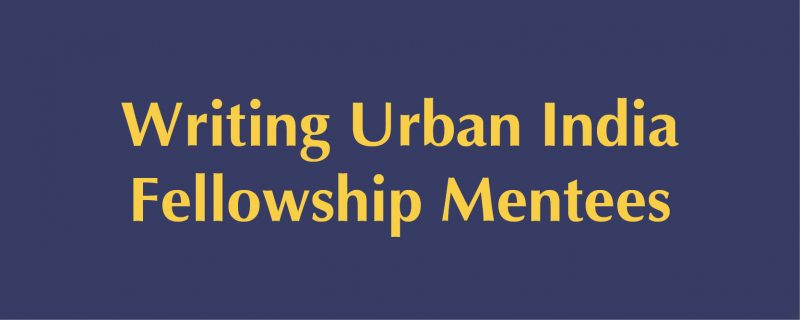

 Suruchi Kumari is a PhD candidate at Jawaharlal Nehru University. She is working on the exceptions and continuity in Industrial Model Townships in India (for her Ph.D. thesis). Her work is principally focussed on the relationship between the state, society, and market in the contemporary urbanisation processes using urban politics and governance as analytical points. She has also received the ICSSR Doctoral fellowship 2019-2021 for her Ph.D. Program.
Suruchi Kumari is a PhD candidate at Jawaharlal Nehru University. She is working on the exceptions and continuity in Industrial Model Townships in India (for her Ph.D. thesis). Her work is principally focussed on the relationship between the state, society, and market in the contemporary urbanisation processes using urban politics and governance as analytical points. She has also received the ICSSR Doctoral fellowship 2019-2021 for her Ph.D. Program.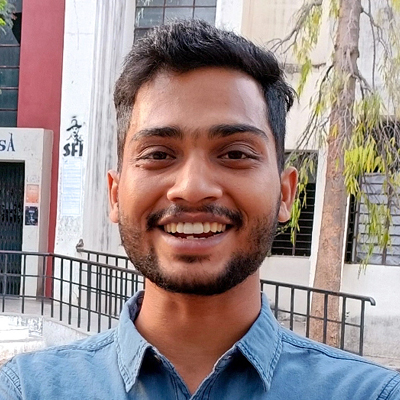 Dhiren is a Ph.D. candidate at IIT Madras. His interest lies in Land tenure, Bureaucracy, Technology led governance, party politics, and local-level governance. He has done his Master’s in Political Science from the University of Hyderabad. His research concerns the JAGA Mission in Odisha. Through his work, he seeks to understand the transformation of land tenures, and the creation of new knowledge through drone-based land titling.
Dhiren is a Ph.D. candidate at IIT Madras. His interest lies in Land tenure, Bureaucracy, Technology led governance, party politics, and local-level governance. He has done his Master’s in Political Science from the University of Hyderabad. His research concerns the JAGA Mission in Odisha. Through his work, he seeks to understand the transformation of land tenures, and the creation of new knowledge through drone-based land titling.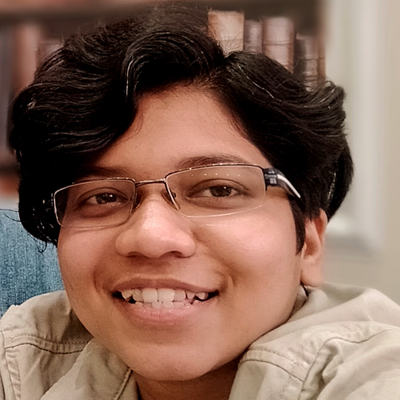 Raina is currently a PhD Research Scholar and ICSSR Doctoral Fellow (2021-’22) at the Centre for the Study of Regional Development, Jawaharlal Nehru University. She works on the themes of urban political ecology, spatial politics, and water-society relations. Her thesis studies the everyday city-making processes around ‘Ghats’ of River Hooghly in Kolkata. She has worked extensively in the field of urban (on the CACIM-Nagar-Nadi Fellowship 2021, with Azim Premji University, ESRC-University of Bristol, Rosa Luxemburg Stiftung-CES Delhi, IIT Kharagpur, etc.). She has contributed to Op-Ed pieces in LiveWire and Beejpatra (People’s Resources Centre).
Raina is currently a PhD Research Scholar and ICSSR Doctoral Fellow (2021-’22) at the Centre for the Study of Regional Development, Jawaharlal Nehru University. She works on the themes of urban political ecology, spatial politics, and water-society relations. Her thesis studies the everyday city-making processes around ‘Ghats’ of River Hooghly in Kolkata. She has worked extensively in the field of urban (on the CACIM-Nagar-Nadi Fellowship 2021, with Azim Premji University, ESRC-University of Bristol, Rosa Luxemburg Stiftung-CES Delhi, IIT Kharagpur, etc.). She has contributed to Op-Ed pieces in LiveWire and Beejpatra (People’s Resources Centre).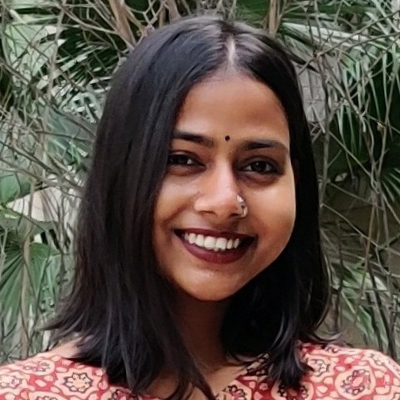 Archana Singh is an MPhil research scholar at the Department of Geography, Delhi School of Economics, University of Delhi. Her current research focuses on mapping the spatialities of young women’s leisure experiences in Lucknow city. She also works on the political ecology of large infrastructure projects, particularly the riverfront development projects which have witnessed a renewed push as a part of Urban river management in India. She has produced numerous reports and articles analysing issues with infrastructure projects on floodplains, with a special focus on river Ganga in Patna and Sabarmati in Ahmedabad.
Archana Singh is an MPhil research scholar at the Department of Geography, Delhi School of Economics, University of Delhi. Her current research focuses on mapping the spatialities of young women’s leisure experiences in Lucknow city. She also works on the political ecology of large infrastructure projects, particularly the riverfront development projects which have witnessed a renewed push as a part of Urban river management in India. She has produced numerous reports and articles analysing issues with infrastructure projects on floodplains, with a special focus on river Ganga in Patna and Sabarmati in Ahmedabad.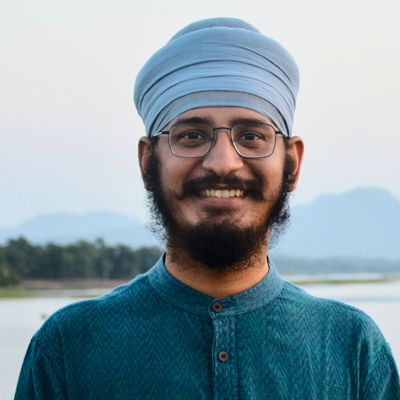 Balbir Singh Aulakh is a PhD Scholar at the School of Habitat Studies, Tata Institute of Social Sciences (TISS), Mumbai. He has completed his M.Phil. in Social Sciences from Tata Institute of Social Sciences and graduated in public policy from the University of Mumbai. His broad research interests include sports development, land transformations, aesthetic politics and community development.
Balbir Singh Aulakh is a PhD Scholar at the School of Habitat Studies, Tata Institute of Social Sciences (TISS), Mumbai. He has completed his M.Phil. in Social Sciences from Tata Institute of Social Sciences and graduated in public policy from the University of Mumbai. His broad research interests include sports development, land transformations, aesthetic politics and community development. Shruthi Ramesh is an architect, urban designer and researcher from Kerala. She holds a Masters in Architecture with a major in Urban Design from CEPT University, Ahmedabad. Her research, vested in critical explorations of urban studies in intersectional feminist and subaltern geographies, has been showcased in various international conferences and publications. She was one of the top finalists of the CEPT Essay Prize 2021-22 for her essay “Colour as Embellishment: The Transforming Culture of Aesthetics in the Realms of the Urban Poor”. Her latest co-authored article, “Geographies of Incineration: The (In)visible Aides of the Tenebrous Urban Networks” was published in the Harvard Urban Review 2022.
Shruthi Ramesh is an architect, urban designer and researcher from Kerala. She holds a Masters in Architecture with a major in Urban Design from CEPT University, Ahmedabad. Her research, vested in critical explorations of urban studies in intersectional feminist and subaltern geographies, has been showcased in various international conferences and publications. She was one of the top finalists of the CEPT Essay Prize 2021-22 for her essay “Colour as Embellishment: The Transforming Culture of Aesthetics in the Realms of the Urban Poor”. Her latest co-authored article, “Geographies of Incineration: The (In)visible Aides of the Tenebrous Urban Networks” was published in the Harvard Urban Review 2022.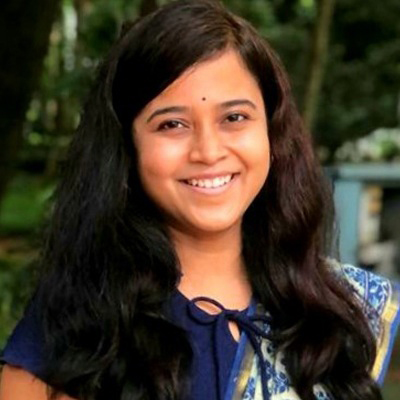 Shreyasi is a faculty at BMS School of Architecture, Bangalore, teaching B.Arch and M.Arch (Urban Design) courses. She is also a Research Scholar at School of Planning and Architecture, Bhopal, with her thesis tentatively titled “Spatial History of East-Bengali Refugees in Post-Partition Kolkata: Mapping Spatial Relationships in a Jabar-Dakhal Refugee Colony”.
Shreyasi is a faculty at BMS School of Architecture, Bangalore, teaching B.Arch and M.Arch (Urban Design) courses. She is also a Research Scholar at School of Planning and Architecture, Bhopal, with her thesis tentatively titled “Spatial History of East-Bengali Refugees in Post-Partition Kolkata: Mapping Spatial Relationships in a Jabar-Dakhal Refugee Colony”.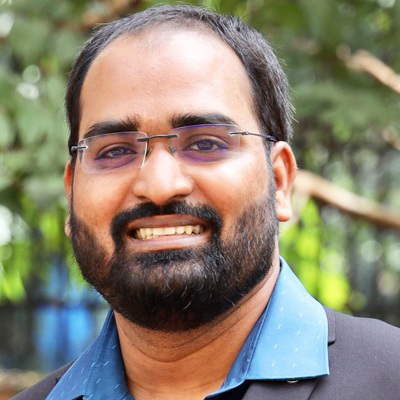 Siddardha Darla holds a PhD in Sociology from Indian Institute of Technology Bombay (IITB). His research interests include understanding resistance and persuasion to neoliberal regime of land dispossession in India and the development agenda that encapsulates it. His PhD thesis investigated the instrumental role played by Land Pooling Scheme in framing politics to land procurement for locating Amaravati city in Andhra Pradesh state of India. He has published in Economic and Political Weekly and presented at national and international conferences.
Siddardha Darla holds a PhD in Sociology from Indian Institute of Technology Bombay (IITB). His research interests include understanding resistance and persuasion to neoliberal regime of land dispossession in India and the development agenda that encapsulates it. His PhD thesis investigated the instrumental role played by Land Pooling Scheme in framing politics to land procurement for locating Amaravati city in Andhra Pradesh state of India. He has published in Economic and Political Weekly and presented at national and international conferences.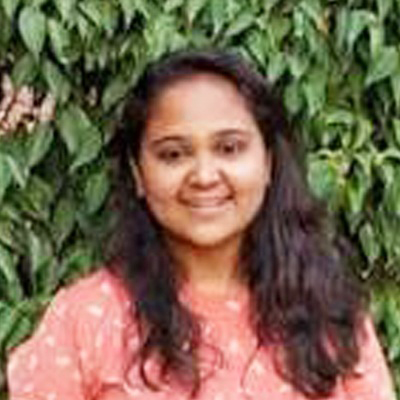 Sila Mishra is a research scholar in the Department of Economic Sciences at IIT Kanpur. Her area of interest primarily lies in applied microeconomics and the economics of family and gender. As part of her research work, she has explored the efficiency of the Indian banking sector, network readiness of countries, and technical efficiency of the Indian judiciary. She is currently exploring India’s Time Use Survey.
Sila Mishra is a research scholar in the Department of Economic Sciences at IIT Kanpur. Her area of interest primarily lies in applied microeconomics and the economics of family and gender. As part of her research work, she has explored the efficiency of the Indian banking sector, network readiness of countries, and technical efficiency of the Indian judiciary. She is currently exploring India’s Time Use Survey.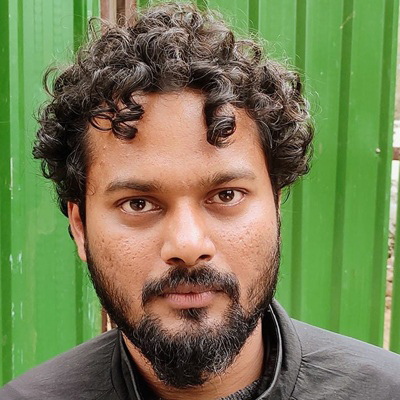 Ankur is currently working with India Labourline as a state coordinator in Delhi-NCR. During the course of his current and earlier work and research experiences, he has travelled across India, interacted with migrant workers across states and documented their life histories. These interactions shaped crucial questions of space and belongingness of migrant workers and their significance in contributing to a life of love and dignity for them. He has co-authored an ethnographic account of the same (Currently in Press), emerging from an ethnographic project. He has also contributed to a photo essay and a documentary based on these narratives.
Ankur is currently working with India Labourline as a state coordinator in Delhi-NCR. During the course of his current and earlier work and research experiences, he has travelled across India, interacted with migrant workers across states and documented their life histories. These interactions shaped crucial questions of space and belongingness of migrant workers and their significance in contributing to a life of love and dignity for them. He has co-authored an ethnographic account of the same (Currently in Press), emerging from an ethnographic project. He has also contributed to a photo essay and a documentary based on these narratives. Sarfras is a final year Post Graduate student pursuing MA in Society and culture from IIT Gandhinagar. He is working1 on the everyday lives and practices of young Muslims of Jamia Nagar (a marginalized neighborhood in New Delhi) for his thesis. He has done an ethnographic observation along with some semi-structured interviews with the young people of Jamia Nagar to know about their perspectives and experiences, based on which he seeks to build a writing output.
Sarfras is a final year Post Graduate student pursuing MA in Society and culture from IIT Gandhinagar. He is working1 on the everyday lives and practices of young Muslims of Jamia Nagar (a marginalized neighborhood in New Delhi) for his thesis. He has done an ethnographic observation along with some semi-structured interviews with the young people of Jamia Nagar to know about their perspectives and experiences, based on which he seeks to build a writing output.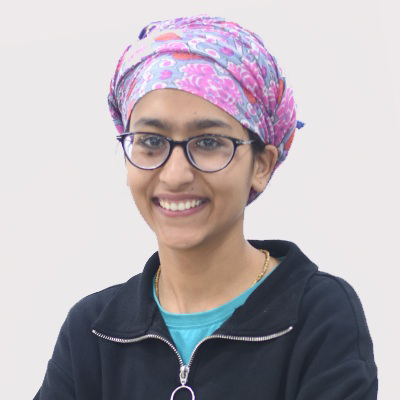 Ritika is an independent researcher. Her research interests are small towns, rural-urban entanglements, urban water and climate change. She has three years of research experience. She is academically trained in Environment Studies. She holds a Master’s in Ecology and Environment Studies from Nalanda University, Rajgir. She was an Urban Fellow at the Indian Institute for Human Settlements (2020-2021) and an Indian Smart Cities Fellow at the Ministry of Housing and Urban Affairs (2021-2022). She seeks to write on how ‘urban’ as a category operates in India.
Ritika is an independent researcher. Her research interests are small towns, rural-urban entanglements, urban water and climate change. She has three years of research experience. She is academically trained in Environment Studies. She holds a Master’s in Ecology and Environment Studies from Nalanda University, Rajgir. She was an Urban Fellow at the Indian Institute for Human Settlements (2020-2021) and an Indian Smart Cities Fellow at the Ministry of Housing and Urban Affairs (2021-2022). She seeks to write on how ‘urban’ as a category operates in India.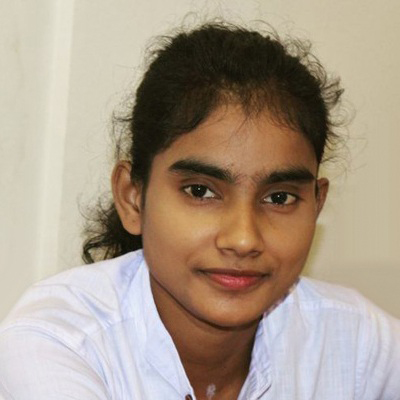 Urmila Sahoo is a PhD scholar from Utkal University, Bhubaneswar, Odisha. She is currently working on the topic of the Elderly in Urban Setups. Her interest lies in studying elderly people and conducting research to inform policies and programmes that concern their welfare. She seeks to publish her work in reputed journals in order to promote more discussion & debating around this topic.
Urmila Sahoo is a PhD scholar from Utkal University, Bhubaneswar, Odisha. She is currently working on the topic of the Elderly in Urban Setups. Her interest lies in studying elderly people and conducting research to inform policies and programmes that concern their welfare. She seeks to publish her work in reputed journals in order to promote more discussion & debating around this topic. Vidya Mary George is a UGC Senior Research Fellow at the School of Sanskrit, Philosophy and Indic Studies (SSPIS), Goa University, India. Her area of research is 20th Century Continental Philosophy. In her research work, she tries to understand the relation between selfhood and space, specifically the constitution of selfhood, its identity, and sense of belonging in space, as theorised by the thinkers Michel Foucault, Paul Ricoeur, and Jürgen Habermas. She has worked as a teacher, dialogue facilitator, counsellor, copyeditor, editorial assistant, and science communicator. She volunteers for Wisdom’s Edge Inc., an outreach organisation that brings philosophy to the edges of society.
Vidya Mary George is a UGC Senior Research Fellow at the School of Sanskrit, Philosophy and Indic Studies (SSPIS), Goa University, India. Her area of research is 20th Century Continental Philosophy. In her research work, she tries to understand the relation between selfhood and space, specifically the constitution of selfhood, its identity, and sense of belonging in space, as theorised by the thinkers Michel Foucault, Paul Ricoeur, and Jürgen Habermas. She has worked as a teacher, dialogue facilitator, counsellor, copyeditor, editorial assistant, and science communicator. She volunteers for Wisdom’s Edge Inc., an outreach organisation that brings philosophy to the edges of society. Shahana Purveen is a doctoral researcher at the Tata Institute of Social Sciences, Mumbai. Her Ph.D thesis focuses on internal migration in Mumbai, specifically concerning the livelihood and identity issues of migrant taxi drivers in Mumbai. She has qualified for the UGC-NET exam conducted by the University Grants Commission. She has been awarded the Erasmus Mundus PhD Exchange Scholarship to visit the University of Oxford. She has presented her research at various national and international conferences. She has also published her work in edited books and journals. Her area of interest is ethnicity, integration, migration, and labour.
Shahana Purveen is a doctoral researcher at the Tata Institute of Social Sciences, Mumbai. Her Ph.D thesis focuses on internal migration in Mumbai, specifically concerning the livelihood and identity issues of migrant taxi drivers in Mumbai. She has qualified for the UGC-NET exam conducted by the University Grants Commission. She has been awarded the Erasmus Mundus PhD Exchange Scholarship to visit the University of Oxford. She has presented her research at various national and international conferences. She has also published her work in edited books and journals. Her area of interest is ethnicity, integration, migration, and labour. Meenakshi Dubey is an architect and urban historian engaged in exploring what architectural and urban history can contribute to shaping our contemporary building cultures. She is currently an Independent Researcher based in Delhi, with teaching and working experience of more than a decade across Delhi, Bhopal & Kerala . She teaches graduate courses on History Theory Criticism and Urban Conservation along with architectural design studios associated with historical and sociological inquiry of urban settlements.
Meenakshi Dubey is an architect and urban historian engaged in exploring what architectural and urban history can contribute to shaping our contemporary building cultures. She is currently an Independent Researcher based in Delhi, with teaching and working experience of more than a decade across Delhi, Bhopal & Kerala . She teaches graduate courses on History Theory Criticism and Urban Conservation along with architectural design studios associated with historical and sociological inquiry of urban settlements.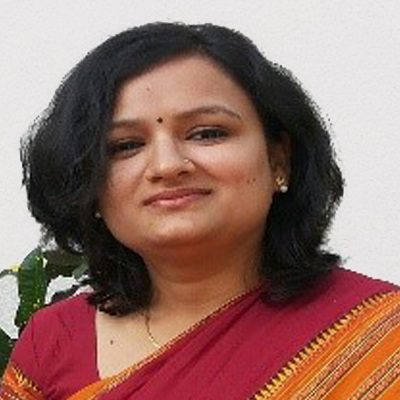 Manjula Bahuguna is an independent consultant with expertise in conducting research studies. She is currently working with Mumbai-based non-governmental organization SNEHA (Society for Nutrition, Education and Health Action) on a study about non-communicable diseases and related healthcare services in informal settlements of Mumbai. She is deeply passionate about health systems strengthening and would like to continue participating in research studies that can inform health policies and improve evidence-based decision-making. She seeks to use the health system and policy research (HPSR) lens for future work in the field of public health.
Manjula Bahuguna is an independent consultant with expertise in conducting research studies. She is currently working with Mumbai-based non-governmental organization SNEHA (Society for Nutrition, Education and Health Action) on a study about non-communicable diseases and related healthcare services in informal settlements of Mumbai. She is deeply passionate about health systems strengthening and would like to continue participating in research studies that can inform health policies and improve evidence-based decision-making. She seeks to use the health system and policy research (HPSR) lens for future work in the field of public health. Chandanapriya is an early-stage Urban Researcher and Practitioner. She is working as Research Associate in collaboration with Dr Devanshi Chanchani from Brunel University, London, and Hasiru Dala on a research project to understand the dynamics of Informal Waste Management in Bangalore City. Stemming from her understanding of Symbolic Anthropology and Grounded theory she has developed an interest in understanding urban cultures and their meanings, symbolisms, and politics through extensive fieldwork, with a focus on – social identity, urban planning, governance, and social practice. Her academic aspirations are driven by grassroots community-based work and social change.
Chandanapriya is an early-stage Urban Researcher and Practitioner. She is working as Research Associate in collaboration with Dr Devanshi Chanchani from Brunel University, London, and Hasiru Dala on a research project to understand the dynamics of Informal Waste Management in Bangalore City. Stemming from her understanding of Symbolic Anthropology and Grounded theory she has developed an interest in understanding urban cultures and their meanings, symbolisms, and politics through extensive fieldwork, with a focus on – social identity, urban planning, governance, and social practice. Her academic aspirations are driven by grassroots community-based work and social change.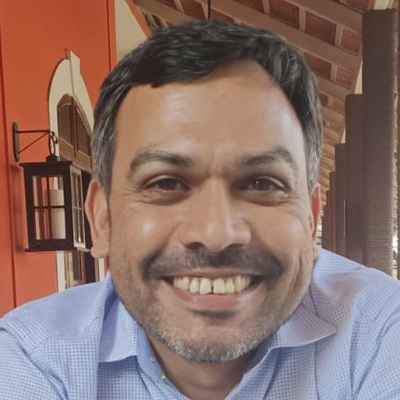 Vikas recently completed his Ph.D. titled “Political Ecology of Urban Flooding: Mapping Psycho-social Vulnerabilities”, at the Centre for the Study of Regional Development (CSRD), Jawaharlal Nehru University (JNU), New Delhi. His Master’s thesis was titled “Kaleidoscopic Cities: An Exploration of Mental Health And Quality of Life In Slums”, and his M.Phil. thesis focused on “A Comparative Study of Hyderabad and Jaipur: Contextualizing Quality of Life in Changing Perspective of Governance.” His research interest is in Urban Studies, Disaster Studies, and Social Psychology.
Vikas recently completed his Ph.D. titled “Political Ecology of Urban Flooding: Mapping Psycho-social Vulnerabilities”, at the Centre for the Study of Regional Development (CSRD), Jawaharlal Nehru University (JNU), New Delhi. His Master’s thesis was titled “Kaleidoscopic Cities: An Exploration of Mental Health And Quality of Life In Slums”, and his M.Phil. thesis focused on “A Comparative Study of Hyderabad and Jaipur: Contextualizing Quality of Life in Changing Perspective of Governance.” His research interest is in Urban Studies, Disaster Studies, and Social Psychology.
